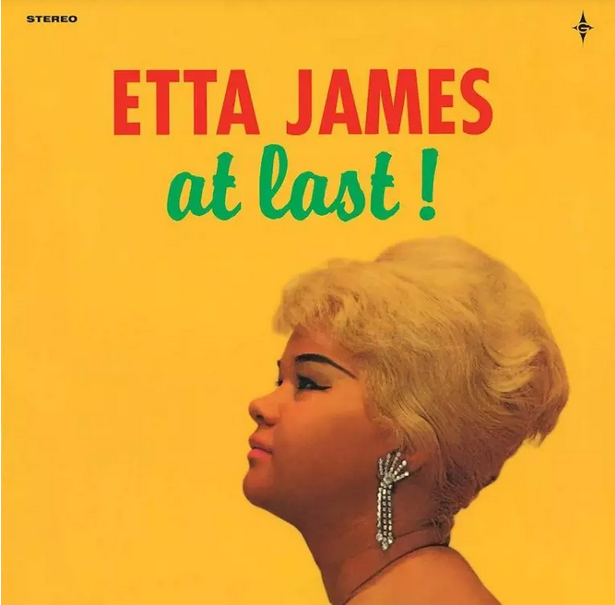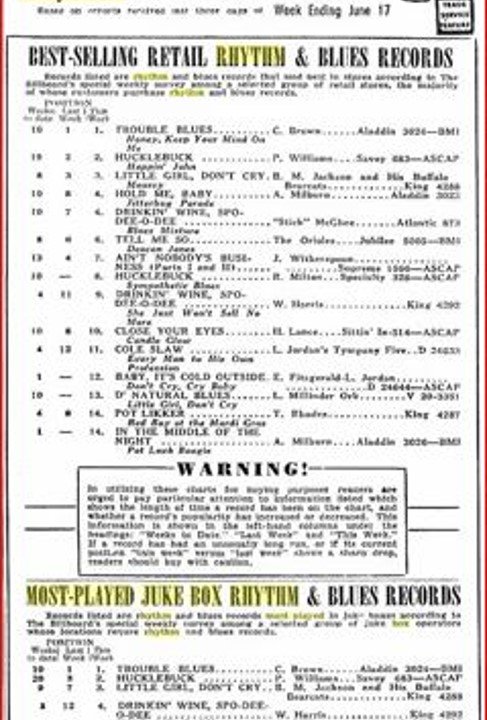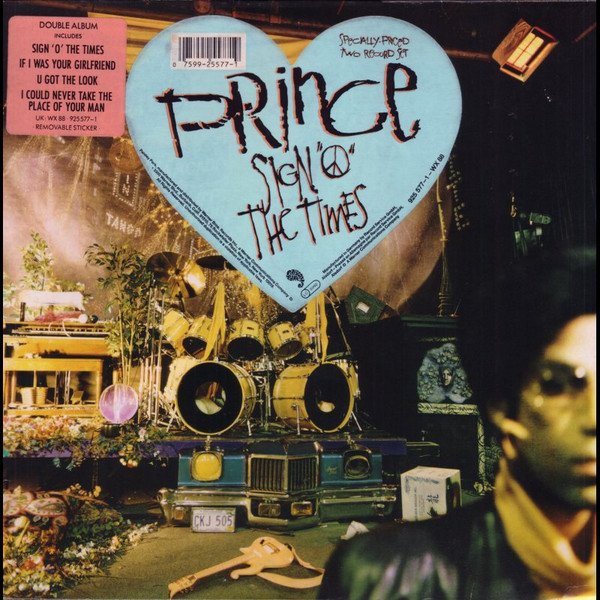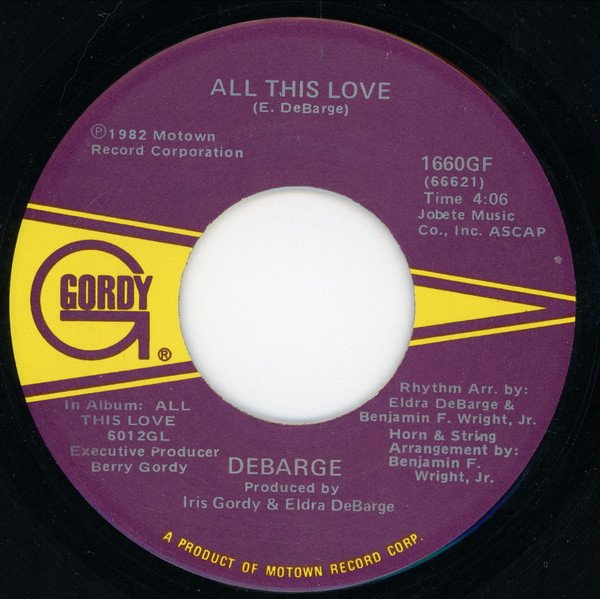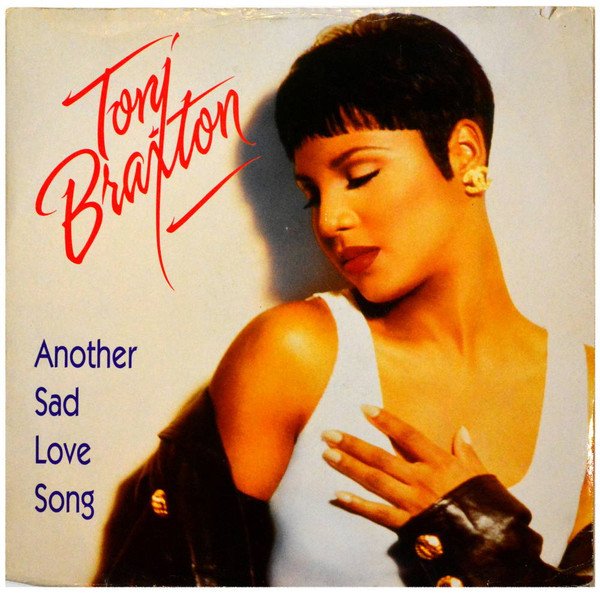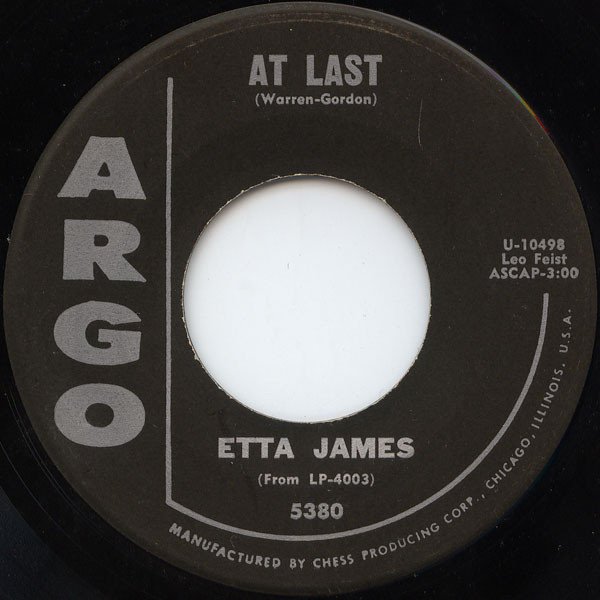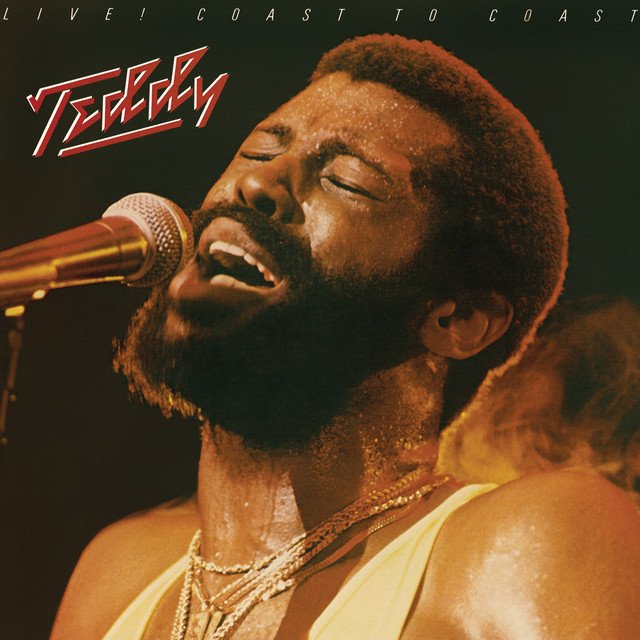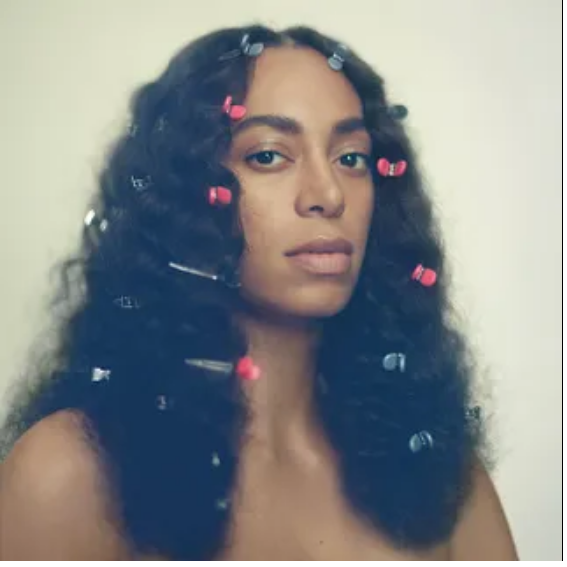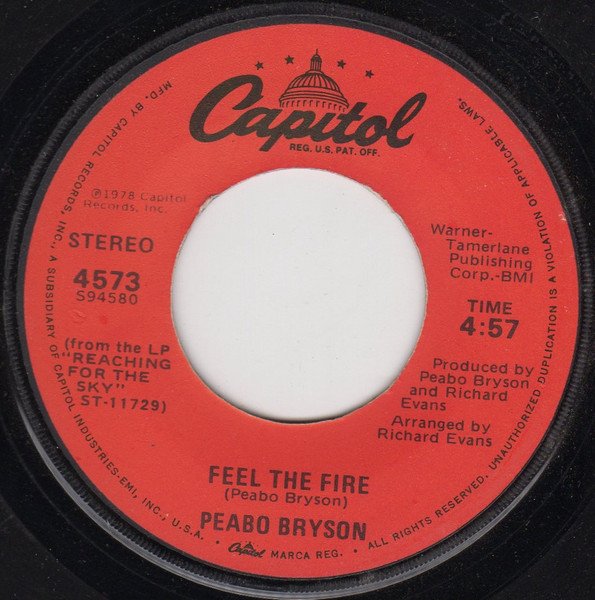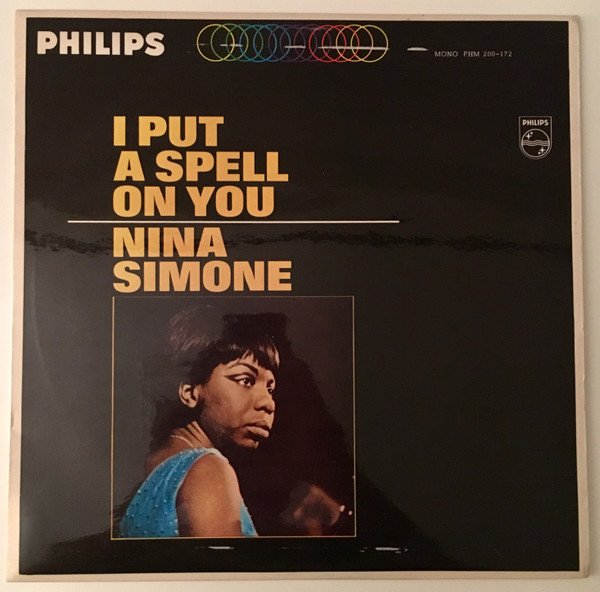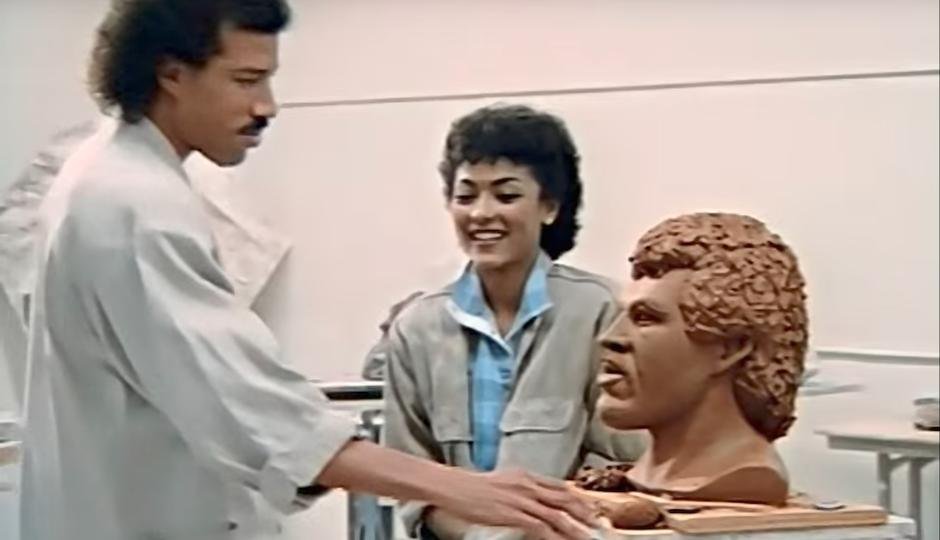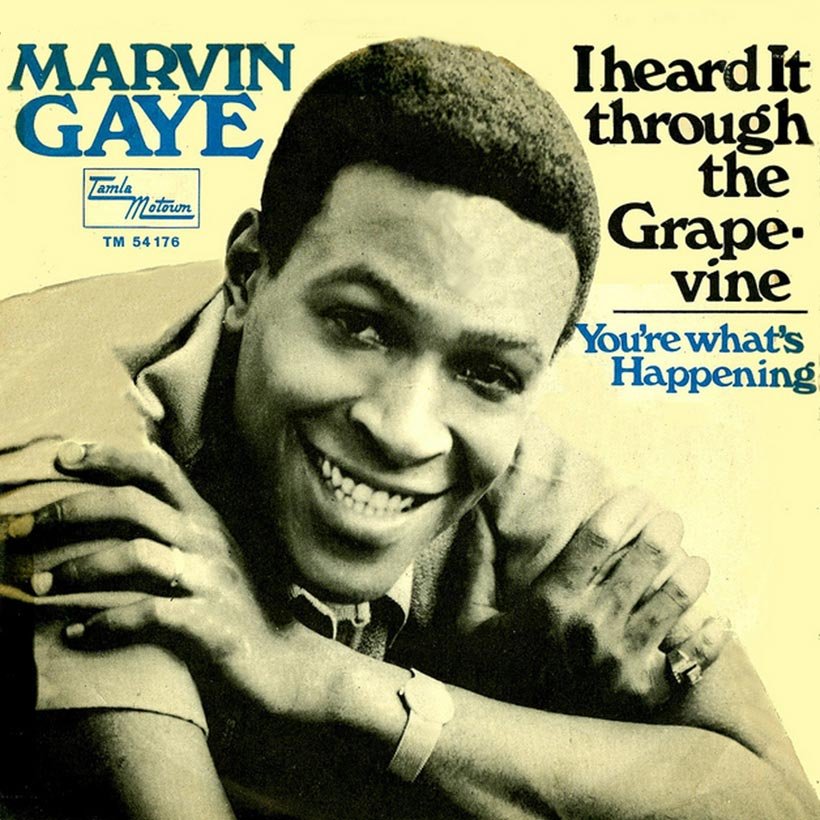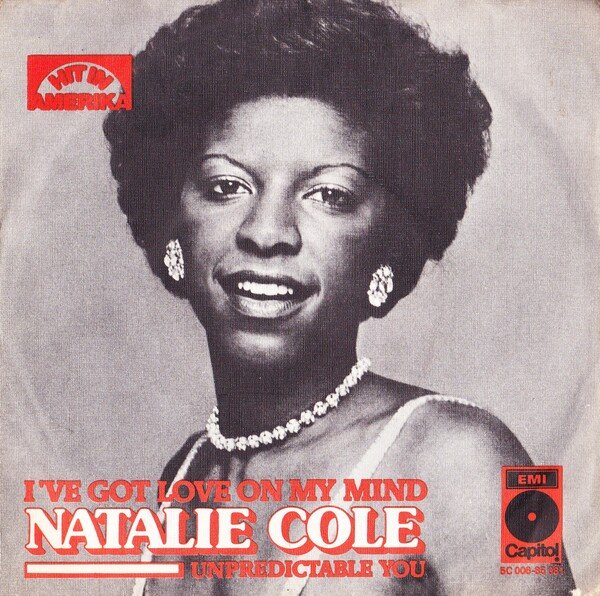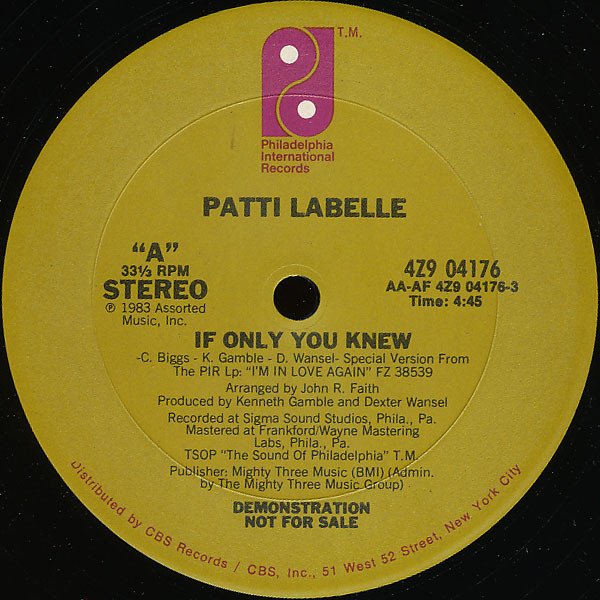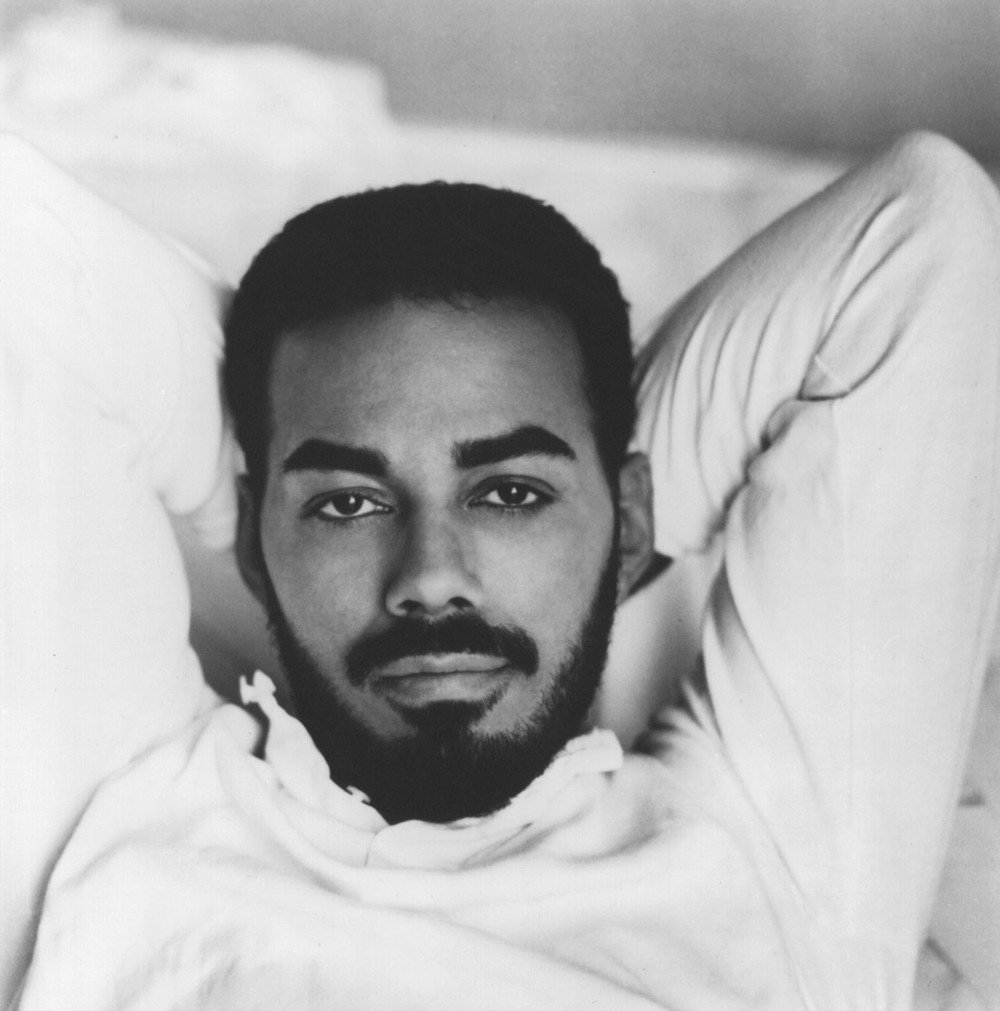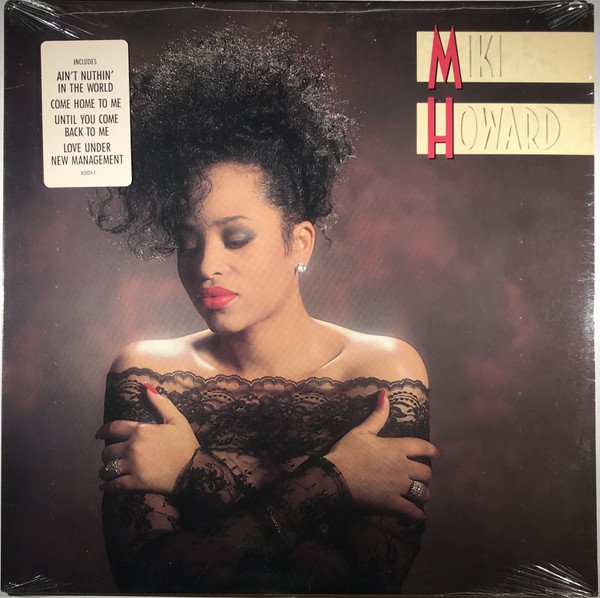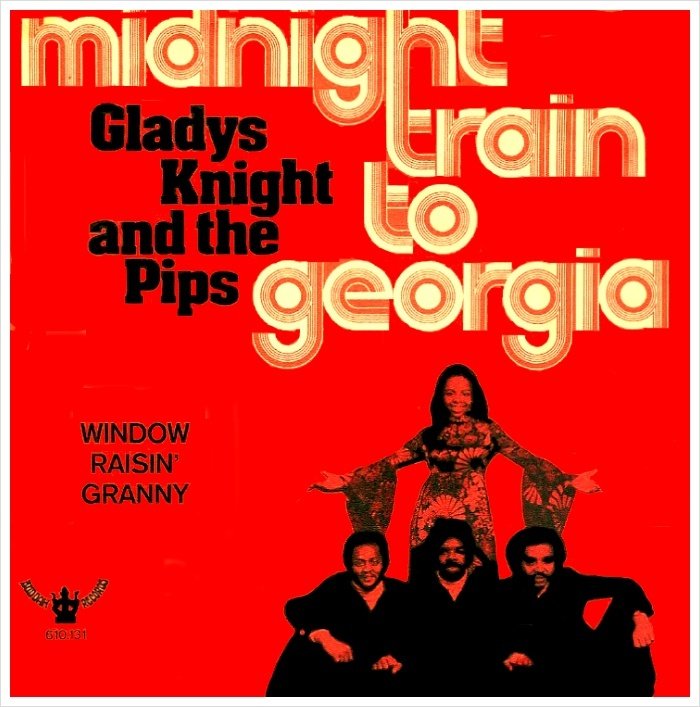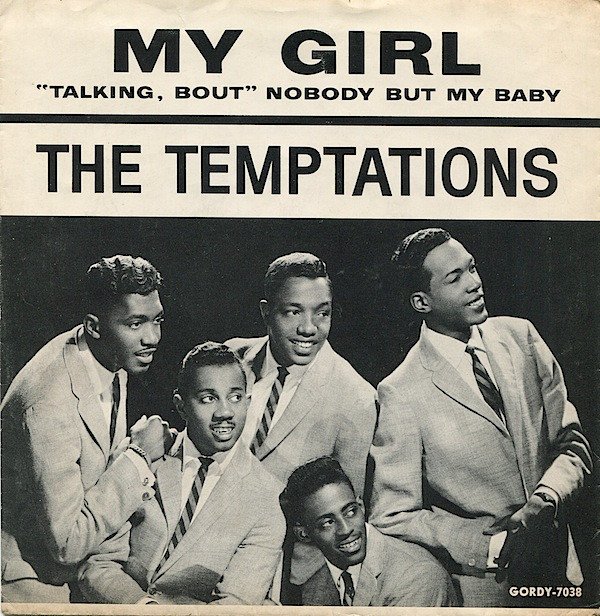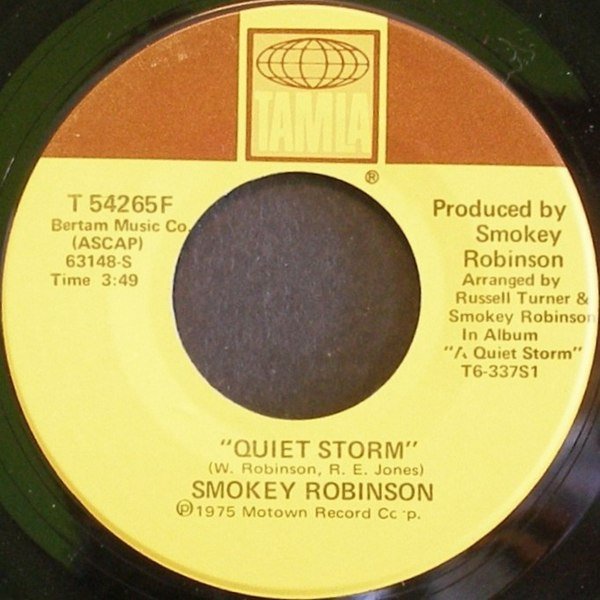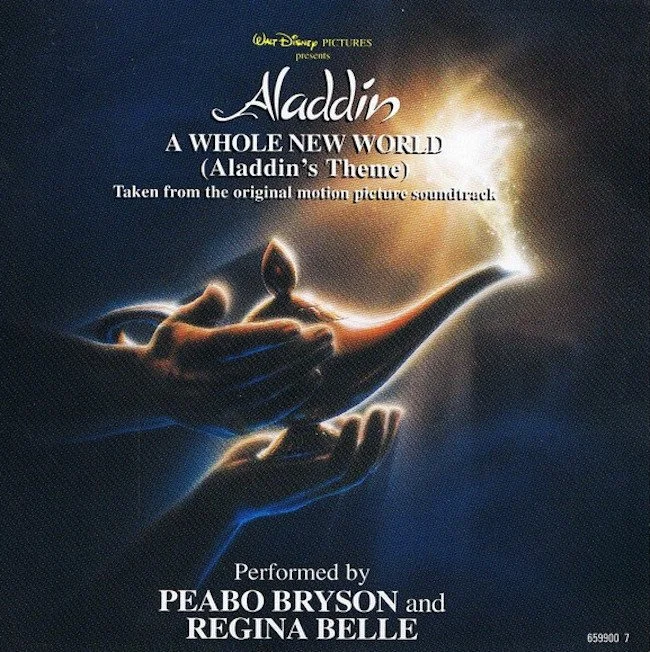103 Best R&B Ballad vocal performances
The combination of beautiful songwriting, a soaring string arrangement, and the impassioned vocals of Etta James made “At Last” a major hit on the R&B charts in 1960 where it reached #2. It is widely considered the definitive version of the song and one of the best love songs ever. Though it is regarded as an R&B standard Etta James’s soulful performance made it relevant for R&B listeners not necessarily the song itself.
“At Last” was originally written by Mack Gordon and Harry Warren for the 1941 musical Sun Valley Serenade where instrumental fragments of its melody are played by the Glenn Miller Orchestra. The first vocal version premiered in 1942’s Orchestra Wives featuring the crooned vocals of Ray Eberle. Whereas Eberle’s performance is smooth and subdued, Etta James phrases the song with greater flair drawing out certain words and emphasizing certain beats through melismatic techniques and syncopated phrasing drawn equally from gospel and jazz. “At Last” is a fairly traditional ballad of its era; James’s interpretation places it in the Black musical idiom that is R&B.
In 1949 Billboard magazine changed its classifications of music popular with predominantly Black audiences via jukeboxes and record stores from “race records” to “Rhythm and Blues” or & R&B. Since then the term has become a catch-all for a wide range of popular music made in the Black vernacular idiom including soul, quiet storm, funk, disco, new jack, and hip-hop soul to name a few sub-genres. On the eve of the 75th anniversary of the chart I decided to reflect on the definitive R&B ballad performances recorded between 1949-2023. I began with 370 songs and selected the top 103 which span from 1950-2016. I originally wanted an even number (100) but erred on the side of inclusion because there were so many great songs.
Defining an R&B ballad performance
R&B singing derives primarily from gospel music except the lyrics are usually secular rather than devotional in nature. R&B vocal performances commonly employ melisma, blue notes, and call-and-response/antiphonal vocal arrangements. Most major R&B singers trace their roots to active participation in musical activities associated with Black Protestant churches including singing in choirs and/or playing instruments. Changes in technology, arranging styles, and musical taste, have placed these core vocal techniques in a wide range of settings over the decades. For example, in the 1970s Roberta Flack, Isaac Hayes, Donny Hathaway, and Smoky Robinson placed Black popular singing in lusher, more conceptual, and atmospheric settings shifting from the gospel punchiness of 1960s soul toward a more hushed, album-oriented style. In the mid-1980s the New Jack Swing style placed R&B vocal singing over more percussive grooves influenced by funk and hip-hop rhythms supplied by synthesizers, samplers, and drum machines. This style also defines the “hip-sop soul” that emerged in the early 1990s.
The concept of a ballad is highly subjective. Ballads are a medieval era expressive form marrying lyrics to music. Since the 19th century ballads are commonly understood as songs sung at slower tempos with romantic and/or sentimental lyrics. Songs with ballad tempos are not confined to a singular time signature nor limited to romantic subject matter. Many ballad recordings have mid- and up-tempo sections, and address themes related to social issues, friendships, and personal esteem, among others. This list generally emphasizes ballads sung at relaxed tempos whose lyrics, melody, and/or atmosphere are more salient than their danceability.
Focusing on performance over composition
As the “At Last” excerpt illustrates the interpretation of a song is the greatest determinant of its R&B-ness rather than the composition of the song itself. R&B singers have commonly interpreted songs from genres outside of R&B and inflected them with arrangements, rhythms, and inflections more characteristic of R&B based approaches. Whitney Houston’s 1992 performance of Dolly Parton’s plaintive country ballad “I Will Always Love You” is one of the more obvious examples of a singer reinventing a song using R&B techniques. Numerous songs associated with R&B originally have also inspired R&B covers. For example, the original 1967 version of “Ain’t No Mountain High Enough” is a spirited duet between Marvin Gaye and Tami Terrell. Diana Ross’s interpretation in 1970 recasts it as a ballad sung at a slower tempo with orchestral backing, and features Ross singing speak-singing certain parts of the lyric and interacting in a call-and response fashion with background singers.
Curating the initial 370 R&B Ballads playlist
To begin the process, I curated of a list of 370 ballads recorded from the mid-1940s-present recorded within discernibly R&B styles (https://open.spotify.com/playlist/3HpcWM7n89Jf7d5PRqFvv0?si=c4f5ad7656db456a). This is a highly subjective area informed by formal and instinctual elements. For example, doo-wop, Motown, Philly Soul, and New Jack are examples of specific recording, production, and performance styles that define specific eras. Additionally, the R&B charts, which draw on sales and airplay, and industry awards, such as the Grammys and Soul Train Awards, inform what is perceived as R&B.
The more challenging aspect included acknowledging famous album tracks played on radio stations but never released officially released as commercial singles, and including songs coded as “pop” that draw on R&B traditions. Additionally, there are multiple songs on the R&B Ballad 370 list that had higher chart placement on the pop chart whose performance and/or arrangement fall squarely into R&B. These kinds of songs raise questions about how perceptions and biases often cloud musical judgment. R&B is primarily an African-American musical tradition category so African-American artists dominate the list.
A few things worth noting in this regard:
1) African-Americans are highly diverse as you would expect of a population comprised of 40 million people. There are ethnic, regional, and stylistic differences that showcase the singular talents and contributions of a panoply of artists.
2) Because my list focuses on individual performances rather than the way artists are “branded” there are artists not necessarily perceived as “R&B” who have written and performed songs in the R&B tradition. Said performances have resonated with R&B listeners and this includes Black British, White American and White British performers. For example, Michael McDonald and Hall & Oates have endeared themselves to pop and R&B listeners since the 1970s. They are influenced by the tradition and are understood as respecting it without appropriating it, and have made genuine efforts to contribute.
3) In examining the chart placements of songs patterns of racial and cultural gaps, and biases, become quite clear. For example, in the early 1970s artists like Aretha Franklin, Gladys Knight & the Pips, and The Stylistics regularly released songs that placed simultaneously in the top 5 or top 10 of the pop, R&B, and “easy listening” charts. During the late 1970s-late 1980s radio was more segregated. There are many songs by Black performers that performed well on R&B radio that never crossed over to pop or had low placements. This is especially true for some “quiet Storm” classics and several New Jack swing era ballads. By the late 1990s R&B and hip-hop dominated pop and flipped things. In 1998 5 of the 14 #1 R&B hits were also #1 on the pop charts. In 2004 8 of the 9 R&B #1 hits were also #1 pop hits.
Why isn’t “Song X” or “Artist X” on the list?
The 370 R&B Ballads playlist is a comprehensive list surveying a variety of representative styles including R&B flavored interpretations of popular standards and original songs, regional styles, songs performed in solo, duo, and group configurations, etc. The list focuses on ballads perceived notable and/or extraordinary. Sales, influence, and industry recognition factor into the larger list but the selections are subjective. I did not limit the number of songs from any artists but I tried to avoid repetition within the catalog of individual artists. A few examples: 1992’s “End of the Road” was a breakthrough song for Boyz II Men. Because “I’ll Make Love to you” (which was even more popular commercially) is, to my ears, a near duplicate I excluded it. There are other selections from Boyz II Men which showcase their talents differently. Chaka Khan is represented five times as a solo artist, a member of Rufus, and as a collaborator with various artists. She has recorded some excellent ballads such as “Love Me Still” and her rendition of “Have a Little Faith in Me” but the five songs I selected represent her most notable and influential ballad performances. I made a conscious choice to make room for some potentially “unorthodox” choices. For example, the Bee Gees were very influenced by R&B and funk. Oddly the selection I chose did not make the R&B charts but it is a decidedly R&B performance and multiple R&B singers and groups have covered it so I included it.
A few explanations are possible:
The songs associated with the artist are not ballads.
This became an issue when looking at the repertoires of several artists associated with funk, disco, and dance oriented genres. Donna Summer and Barry White are iconic singers in pop, R&B, and dance but the tempos of most of their songs are too dance oriented to count as ballads.
Popularity ≠ Significance.
Again, this is highly subjective. There are numerous figures who have achieved commercial success in R&B in different eras such as Eugene Wilde in the mid-1980s, Joe in the 1990s-early 2000s, and Ashanti in the early 2000s. Each figure reflects a style popular during their era but is not an innovative artist and their longer-term impact remains to be seen.
One rendition of a song is more significant than others.
R&B has a strong tradition of interpretative singing. For songs that have been covered continually I have selected the best version of the song. For example, Charles Fox and Norman Gimbel’s “Killing me Softly with His Song” was originally sung by Lori Lieberman but Roberta Flack recorded the mot iconic version. Al B. Sure! and The Fugees both had R&B chart hits with cover versions in 1989 and 1996 respectively but her version is definitive. Comparatively, there are some versions of songs recorded by their songwriters originally that are less well-known but notable. For example, Roberta Flack and Luther Vandross both recorded fine versions of Brenda Russell’s “If Only for One Night” but her version is the blueprint.
Selecting the Top 103 Essential Ballads
I intentionally wanted the 103 songs to be an eclectic listed that represented a spectrum of voices, styles, eras, and influences. I did not limit the number of songs recorded by a single artist, require the song be commercially released, or impose any other artificial stipulation. Instead I considered the following questions:
· What are the unique qualities of the performance? To be more concrete: What makes it beautiful, listenable, and/or distinctive?
· Is it a performance that has influenced other musical artists?
· Does the performance exemplify a particular style of performance?
· How does the performance capture the voice of a notably influential R&B figure?
Listed below are the 103 songs, editorial reflections, and some general info about the songs! At the end I share a link to the playlist and the Reader’s Choice selections. Thanks to everyone who shared their favorite R&B ballads.
The selections are arranged in alphabetical order by title. Each entry includes the following information: Song title, Year, Chart placement, Artist’s name, and Rationale. I also note Grammy Awards the recordings have received and use a ** to denote inductees into the Grammy Hall of Fame which honors “recordings of lasting qualitative or historical significance that are at least 25 years old.”
The Ballads:
Adore, 1987 (album track)
Prince
Prince's sultry falsetto and wide-eyed romanticism have never merged more seamlessly than this classic album track from Sign O' the Times. Integral to its genius is the ability to synthesize elements of funk, soft soul, and pop into something familiar yet different. “Adore” is not merely a great record; it's a roadmap to a singular sensibility, and undoubtedly an influence on the way musicians like Bilal, D'Angelo, and Maxwell have approached the art of the ballad.
**Ain’t no sunshine, 1971 (#3 pop/#6 R&B)
Bill Withers
Bill Withers worked in the Navy for a decade before becoming one of popular music's finest songwriters. Born and raised in West Virginia he infused many of his songs with musical and thematic elements more associated with folk and gospel than R&B. Among his classic compositions (e.g., "Lean on Me," "Use Me," "Grandma's Hands") "Ain't No Sunshine" is remarkably artful and spare in sentiment, melody, and arrangement. Combining an acapella vocal opening, spare percussion, gently cascading strings, and a famous vocal refrain (repeated "I know") it is quintessential Withers. What do Aaron Neville, Joan Osborne, Michael Jackson, Ladysmith Black Mambazo and Des'ree, Betty LaVette, Garth Brooks and Jose James have in common? Each has interpreted "Ain’t No Sunshine"! [Grammy Winner: R&B Song]
Ain’t no way, 1968 (#16 pop/#9 R&B)
Aretha Franklin
Aretha Franklin’s sister Carolyn composed some of her most iconic songs (e.g., “(Sweet Sweet Baby) Since You’ve Been Gone,” and “Angel”) and the greatest of them is the piercing ballad “Ain’t No Way.” Lyrically, “Ain’t” is a lover’s impassioned testimony that she can’t love someone who is unavailable and unwilling to be loved. Musically it transmits everything great about Franklin and the musicians she worked with during her peak. Gospel chords, played by Aretha pull us in, Aretha takes the lead vocal and at key moments Cissy Houston’s soprano hovers in the background. Though Franklin is adept at building the inner dynamic of songs the climax she and her vocalists (The Sweet Inspirations) achieves at the bridge is volcanic soul moment embodying how the aesthetics of gospel can make even the most secular song sound like a spiritual. Some of R&B’s leading lights have interpreted the song including Aaron Neville and Patti LaBelle who duets with Mary J. Blige, and when performed live it is a reliable showstopper.
All of me, 2013 (#1 pop/#1 R&B)
John Legend
John Legend brought a high level of craftsmanship and versatility to the neo-soul scene when he debuted in 2004. His Grammy winning ballad “Ordinary People” established him as a gifted melodist and lyricist whose best songs feel singular. 2013’s “All of Me” written for his wife Chrissy Teigen is a remarkably intimate, soul-baring song espousing a profound appreciation for the idiosyncrasies, eccentricities, and “imperfections” we accept unconditionally when commit to love someone. A straightforward, piano-driven ballad sung with great passion and precision its directness and vulnerability resonated widely and made it Legend’s most successful song.
All this love, 1983 (#17 pop/#5 R&B)
DeBarge
Though family super group DeBarge was likened to The Jackson Five they always had their own sound. Among their catalog of classic ballads (e.g., "Time Will Reveal," "Love Me in a Special Way") "All This Love" written by El DeBarge who also sings lead, plays keyboards, and co-produces, is their magnum opus. From the seductive melody to DeBarge's graceful tenor to the luscious harmonies, rarely has a ballad captivated the ears so effortlessly. An instant classic when it debuted in 1982 such legends as Patti LaBelle, Johnny Mathis, and Boyz II Men, have reprised its beautiful music.
Always and Forever, 1978 (#18 pop/#2 R&B)
Heatwave
Heatwave was a moderately popular R&B and funk band until 1977's "Boogie Nights" made them a radio staple in the disco era. Their sumptuous ballad "Always and Forever" seemingly came from nowhere. It was calm, romantic, and delivered smoothly and sincerely by vocalist Johnnie Wilder Jr. during a time when the most popular songs focused on dancing and leisure. Several things distinguish the song including its elegant melody and simple lyrics. Wilder's delivery is understated throughout and then he surprises you with a powerful modulation that ascends to a falsetto he wields with impressive precision. Like a volcano it builds slowly, erupts, and returns to a calm state, and you're never quite the same afterwards. "Always" is such an iconic song that even vocalists as gifted and distinctive as Luther Vandross and Johnny Mathis adhered faithfully to its original arrangement with only minor refinements.
And I am telling you I’m not going, 1982 (#22 pop/#1 R&B)
Jennifer Holiday
The moment you hear the bells, the piano chords, and Jennifer Holiday declare "And I am telling you…I'm not going" you know you're about to go on an epic journey. Holiday originated this gospel-flavored showstopper from Dreamgirls and against all commercial predictions her recording topped the R&B chart in 1982 and reached the top 25 of the pop chart. Combing the history of gospel infused performances by vocalists like Bobby “Blue” Bland, Ray Charles Aretha Franklin, Patti LaBelle, and others one struggles to think of a more intense and captivating vocal. Holiday's conviction--as well as her sheer power and range--make this the ultimate ballad of tenacity in the soul music canon. [Grammy Winner: Female R&B Vocal Performance]
Another sad love song, 1993 (#7 pop/#2 R&B)
Toni Braxton
"Another Sad Love Song" is brilliant because it is anything but another routine ballad. Lyrically, the song captures how in our most challenging moments of heartbreak music is frequently our refuge. We know every emotional and music step the songs will take us through and yet we can't resist the balm they provide us. If the song is extraordinary in its awareness of itself the vocalist Toni Braxton--whose rich, smoky, sultry sound is "expensive"--amplifies its impact. Braxton emerged as the true successor to the captivating, swooning vocal style that made Anita Baker the most intriguing woman balladeer to emerge a decade prior. Braxton's performance earned her the Grammy for Best New Artist and a new standard bearer in contemporary R&B singing. [Grammy Winner: Female R&B Vocal Performance]
As, 1976 (#36 pop/#36 R&B)
Stevie Wonder
Nine Stevie Wonder ballads, the most of any artist, appear on the larger 370 songs list from which this list is derived which speaks volumes about his gifts as a composer and vocalist. Between the late 1960s-mid-1980s he released a succession of memorable ballads. The most musically and lyrically advanced of them all is "As" one of the most stirring tracks from his classic 1976 double album Songs in the Key of Life. "As" features some of his finest lyrics and most sophisticated melodic lines. Wonder sings of love as an eternal phenomenon as natural as anything in the universe and as a fundamental source of jubilation. This sentiment is matched by a fervent arrangement that swells. The full-length album version finds Wonder taking on a playful growl for emphasis and an even more intense vocal arrangement driving home the song's open-hearted message.
**At last, 1961 (#47 pop/#2 R&B)
Etta James
Etta James scored some important R&B hits in the late 1950s including sexy, playful songs like "Roll with Me Henry" and "Good Rockin' Daddy" but "at Last" proved the rocker had a sweet side. Written for a 1940s film musical and recorded by several artists prior, such as Nat "King" Cole, James's embrace of its inherent vulnerability and sense of wonder makes her version the first to make the song a standard. The cinematic feeling of the strings, the spaciousness of its opening bars, and the way Etta James enters slowly feels like someone who has been holding out for love for a lifetime. Her voice has just enough husk to give her delivery a distinctive sound and a touch of sensuality. A big hit on R&B radio and a mild pop hit at the time it has gained stature over time. Singers as diverse as Phoebe Snow, B.B. King & Diane Schuur, Celine Dion, and Beyoncé have covered "At Last" but James is the reason the song is so revered.
Betcha by golly wow, 1972 (#3 pop/#2 R&B)
The Stylistics
Russell Tompkins Jr's beautiful tenor, the plush arrangements of Thom Bell, and some of the most romantic songcraft known to pop music helped define a new era in Black pop: the Philly Soul sound. Specializing in luscious ballads like "You Make Me Feel Brand New" and "You Are Everything" the Stylistics were a banner group for the sound and one of the premiere R&B groups of the early 1970s. "Betcha By Golly Wow" is their most iconic song--a wide-eyed, almost naive ode of love buoyed by their signature sound. If a song is judged by the company it keeps "Betcha" is in great company-- New Orleans legend Aaron Neville, funkster Prince, and jazz vocalist Nnenna Freelon are among those who have explored its contours.
**Bring it on home to me, 1962 (#13 pop/#2 R&B)
Sam Cooke
Several years after romantic ballads like “You Send Me” and “You Were Made for Me” made Sam Cooke one of the leading lights of soul music he dug deeply into the well of gospel for his sensual ballad “Bring it On Home to Me.” Slightly faster in tempo than his usual ballads its stands out for its more grown adult subtly sexy lyrics and a stirring call and response interplay between him and Lou Rawls whose emphatic baritone elevates the gospel feel even further. A true soul standard it was a big R&B and pop hit that has inspired versions by an eclectic group of singers including Rawls, country singer Mickey Gilley, rock group The Animals, and a vocal collaboration between George Benson, Al Jarreau, and Paul McCartney.
Can you stand the rain, 1989 (#44 pop/#1 R&B)
New Edition
Five years can be a lifetime for teen pop groups whose lifespans are usually notoriously brief. New Edition transcended this by embracing contemporary music trends and replacing Bobby Brown with Johnny Gill. Their breakout song is a sleek, torchy masterpiece that helped them pivot from teen pop to adult R&B with aplomb. The song demonstrated the remarkable vocal prowess of Gill who went on to have a successful solo career, as did Ralph Tresvant, and opened the door for the formation of Bell Biv DeVoe who contributed to the rise of hip-hop soul in the early 1990s.
**A change is gonna come, 1965 (#31 pop/#9 R&B)
Sam Cooke
During an era of heightened national and global attention to Civil Rights Era organizing Sam Cooke, inspired by Bob Dylan’s “Blowin in the Wind,” captured the collective anguish and optimism in the epic “A Change is Gonna Come.” The swelling, cinematic strings that open it initially sound like a film theme but Cooke’s soulful intonation and intricate lyrics set it apart from almost anything else at the time. Cooke’s lyrics bridge the gap between the quotidian nature of racist exclusion felt by everyday Black Americans and a long held, transcendent sense of justice as an inevitability. Released posthumously after Cooke’s sudden death in 1964 it endures as an anthem of resistance and hope. Among the many renditions of the song some which standout include Aretha Franklin, Sananda Maitreya (formerly Terence Trent D’Arby) and Booker T & the MGs, Aaron Neville, and Tina Turner.
Close the door, 1978(#25 pop/#1 R&B)
Teddy Pendergrass
Teddy Pendergrass’s burly, almost outsized baritone sound infused urgency in nearly everything he sang as lead of Harold Melvin and the Blue Notes including ballads like the sumptuous “If You Don’t Know Me by Now,” the social anthem “Wake Up Everybody,” and dance songs like “The Love I Lost.” When he went solo he remade himself into a romantic crooner. Unlike the chaste ballads commonly sung by crooners the songs written for Pendergrass were sensual, carnal ballads aimed at adult listeners. “Close the Door” is a pioneering “bedroom ballad” whose sensuous aura and suggestive lyrics, delivered with Pendergrass’s signature intensity, added a layer of sexuality to R&B music that made Pendergrass an icon, especially for women, and won him a new audience of listeners.
Could it be I’m falling in love, 1973 (#4 pop/#1 R&B)
The Spinners
Post-funk and pre-disco The Spinners pioneered the rhythmic ballad sound of Philly Soul via the majestic splendor of "Could It Be I'm Falling in Love." Luscious, romantic, and sweeping in rhythm and arrangement the Spinners simply soar. "Could," featuring vocals by both Bobby Smith and Phillipe Wynne, supported by the group's elegant harmonies, represents an evolution of the classic R&B male singing group into a new era of Black pop. One of the defining songs of Philly Soul it is a benchmark of the era.
Cranes in the sky, 2016 (#74 pop/#28 R&B)
Solange
One of the bravest and most unexpected songs of the 2010s is Solange’s thoughtful anthem of melancholic despair written by Knowles with Raphael Saadiq. Eschewing traditional romantic themes or the sybaritic club vibes of much contemporary R&B the song places listeners inside of the feeling of a nearly relentless emptiness not easily solved by sex, drugs, or consumerism. [Grammy Winner: R&B Performance]
**Don’t make me over, 1963 (#21 pop/#5 R&B)
Dionne Warwick
After years of background singer Warwick came to the forefront thanks to this Burt Bacharach-Hal David original written for her allegedly in response to her own request in a recording studio to be hard and not to be "made over." Regardless, Warwick's convictions, and her formal music training, made her Bacharach and David's muse which led to her becoming the third most popular female singles artists of the 1960s (after Connie Francis and Brenda Lee) and the most popular Black female vocalist ahead of even Aretha Franklin. "Don't Make Me Over" was the first of 20 top 40 pop hits she scored between 1962-69 and it encapsulates many of her virtues including her distinctive voice, seemingly effortless phrasing and rhythmic command, and an actor's flair for lyric interpretation. Whether redone as a country-flavored pop ballad, as Jennifer Warnes did in 1979, or as a dance cut, which Sybil achieved in 1989, the song itself and Warwick's performance are classic.
Drift away, 1973 (#5 pop/#42 R&B)
Dobie Gray
Dobie Gray was a singer and actor who was best known for recording the anthemic "The 'In' Crowd" in 1965. In the early 1970s he collaborated with writer-producer Mentor Williams and remade his sound and image into a hybrid of country and soul documented on the 1973-74 album trio Drift Away, Loving Arms, and Hey Dixie. The most memorable song to emerge from their collaboration was his take on William's ode to the transcendent power of music "Drift Away." "Drift" is one of the rare recordings whose composition, arrangement, and performance truly defy category. The opening guitar has a country flavored tuning, the laid-back beat fits within easy listening style pop, and Gray's vocal is as soulful as any singer of the time. Collectively these coalesce into a remarkably poignant embodiment of how--as the lyric states--music can soothe our souls and allow us to pause and get lost in its splendor. Gray was not the first nor the last to sing the song but his is definitive.
Easy, 1977 (#4 pop/#1 R&B)
The Commodores
The Commodores proved they were more than a traditional funk band by releasing a string of melodic, enchanting ballads throughout the mid-to-late 1970s usually written by Lionel Richie who sang the lead vocals. "Easy" is a deceptively relaxed song given its lyrics, so beautiful is the music. The lyric conveys a man's resignation that he has done everything he can to make a relationship work and he has accepted its demise, thus he is leaving. Despite the thematic darkness the music complements the sense of freedom. The melody is unhurried, the harmonies are plush, and the vocals are sober without feeling bleak. This is a remarkable balancing act that helped "Easy" become one of several signatures for The Commodores and a soul classic.
End of the road, 1992 (#1 pop/#1 R&B)
Boyz II Men
We all know Boyz II Men could sing thanks to their electrifying harmonies on the 1991 breakout single "Motownphilly" and their beautiful remake of "It's So Hard to Say Goodbye to Yesterday." Nothing, however, quite prepared us for the stunning performance they deliver on Babyface, L.A. Reid and Daryl Simmons's 1992 song "End of the Road" which premiered in the 1992 romantic comedy Boomerang. Evoking the grandeur and drama of classic 1970s soul ballads like "Have You Seen Her" the song initially seems conventional but the spoken passages by Wanya Morris's pleading wails, bass Michael McCary's spoken word passages, its epic build, and of course its signature: the pitch perfect acapella bridge whose harmonies can't help but send chills down the spine. "End" topped the pop charts for a record breaking 13 weeks, stayed on the charts for 32 weeks, and won two Grammies. In addition to propelling Boyz II Men into the pantheon of great R&B vocal groups it established a blueprint for epic balladry they followed with their future smash "I’ll Make Love to You" which succeeded their own record topping the charts for 14 weeks in 1994. [Grammy Winner: R&B Performance by a Duo or Group with Vocals]
Fallin’, 2001 (#1 pop/#1 R&B)
Alicia Keys
In the mid-1990s singers like Me’shell Ndegeocello, Dionne Farris, Rahsaan Patterson, D’Angelo, and Erykah Badu pushed Black pop in new, more idiosyncratic directions. Inspired by 1970s R&B, jazz, and hip-hop they pioneered a sound loosely referred to as neo-soul. Alicia Keys expanded the impact of the neo-soul aesthetic with her classically influenced powerhouse piano ballad “Fallin.’” Highly melodic, relatable, and appealing to the ear it has a lovely ballad feel underscored by a funky rhythmic kick and call and response vocal interplay between Keys and her singers that showcase her formidable skills as a vocalist, pianist, lyricist, and arranger. A pop and R&B chart topper it made Keys a star and part of a new vanguard for the next phase of 21st century R&B. [Grammy Winner: Song of the Year, R&B Song, Female R&B Vocal Performance]
Feel the fire, 1978 (#13 R&B)
Peabo Bryson
“Something that you told me stayed in my head” from 1978’s “Feel the Fire” is one of the most iconic opening lines in R&B. For good reason—vocalist Peabo Bryson delivers it with such silken conviction he instantly grabs you as the song builds to the hook “Feel me/I want to feel the fire.” Bryson, who sings, writes, plays, and produces, helped R&B ballads grow up in the 1970s by demonstrating a man could sing of love without ignoring the physical and acknowledge the sensuality of love without lapsing into crassness. Everything about “Fire” works from his warm vocal, to the plush background vocals, to the luscious strings. He inflects his lines with gospel-flavored passion that crescendos seamlessly with the lyric and strings. It is telling that his peers took notice immediately; Stephanie Mills covered the song a year later and she and teddy Pendergrass redid it in 1980 as a duet. One of the most recent interpretations is jazz singer Maysa’s 2007 version recorded for an album of classic R&B ballad covers alongside songs by Stevie Wonder and Bill Withers.
Feeling good, 1965 (album track)
Nina Simone
Pianist, vocalist, activist, and firebrand Nina Simone had one of the most unconventional careers in pop. Classically trained, Simone fell into popular music to make a living and recorded definitive versions of standards like "Love Me or Leave Me," "My Baby Just Cares for Me," and her first "hit" 1959's "I Loves You, Porgy." Simone gradually spread her wings breaking from supper club jazz and recording everything from Jewish folk songs to rock 'n' roll. One of her most iconic album tracks is her sizzling take on Anthony Newley and Leslie Bricusse's “ Feeling Good" written originally for the musical The Roar of the Greasepaint-The Smell of the Crowd. In classic Simone fashion her recording for her 1965 album I Put a Spell on You treats it as personal expressing placing it in a brassy, gently swinging arrangement that builds steadily to a bridge that leads Simone to an iconic wordless vocal passage. Exuberance has never felt so good. Though never released as a single nearly every vocalist who records it patterns their approach after Simone's ageless arrangement.
Fever, 1956 (#24 pop/#1 R&B)
Little Willie John
Pop and jazz fans are highly familiar with Peggy Lee's classic 1958 arrangement "Fever" but R&B singer Little Willie John first recorded it in 1956. Lyrically, "Fever," co-written by Eddie Cooley and Otis Blackwell, is a clever nod to the intoxicating feel of infatuation. Musically, it has an enchanting serpentine melody widely adaptable across genres. The original arrangement is set at a brisker tempo than Lee's and has a sultry, sax laden feel characteristic of mid-1950s R&B. Though Lee made the song her own, updating the lyrics and creating a unique bass and drum arrangement with arranger Jack Marshall, Little Willie John's version is a classic in its own right and hopefully inspires readers to learn more about the artist who was an important singer and something of a tragic figure.
The first time ever I saw your face, 1972 (#1 pop/#4 R&B)
Roberta Flack
Roberta Flack's version of Ewan MacColl's yearning folk song inspired listeners to pause, listen, and soak up every nuance of its hypnotic aura. In a sense Flack was part of a vanguard of album-oriented Black musicians who inspired their peers to slow things down. Recorded in 1969 as an album track for her album First Take, the song's use in Clint Eastwood's film Play Misty for Me enchanted audiences whose interest led to its release as a single in 1972. Flack made history when the single topped the pop charts for six weeks the longest for any female artist since 1956 and was honored with the Grammy Award for Record of the Year in 1972, the first Black female artist to do so. “First” was first recorded by folks singers in the early 1960s but became more widely covered standard due to Flack’s success. Johnny Mathis, Elvis Presley, Alison Moyet, Ann Hampton Callaway, George Michael, and Karrin Allyson are among those inspired by Flack’s interpretation. [Grammy Winner: Record of the Year and Song of the Year]
For the love of you, 1975 (#22 pop/#10 R&B)
The Isley Brothers
There's something to be said about the intrinsic value of sheer beauty. “For the Love of You" is worth celebrating for numerous reasons. The lsley Brothers crafted and performed one of the most graceful melodies in contemporary popular music anchored by lovely lyrics of devotion and one of lead singer Ronald Isley's most spacious and relaxed vocals. It's worth noting that "For" is a 5:39 song written for the Isley's 1975 album The Heat is On which reflects the new creative freedom Black artists explored in the albums era. All of its tracks are longer songs officially subtitled as "Parts 1 & 2” signifying a desire for listeners to understand the songs as part of a concept and a suite rather than just a collection of singles. Whitney Houston, jazz singer Laverne Butler, Regina Belle, and Boyz II Men have interpreted "For the Love of You" which illustrates how well regarded it is as a composition for other musicians.
Free, 1976 (#25 pop/#2 R&B)
Deniece Williams
After singing background in Stevie Wonder's band as a member of "Wonderlove" Williams went solo launching her career with 1976's "soft soul" classic "Free" an original song with a jazzy arrangement that unfolds gently and reveals the suppleness of Williams' pop soprano praised for it "startling dulcet clarity" in 1992's Rolling Stone Album Guide. "Free" is a gorgeous personal anthem, and a milestone recording symbolizing an expanding the concept of what a "soul" singer could be in the 1970s. While Williams drew on gospel she emphasized the power of the softer side a sound also heard in peers like Minnie Riperton, Angela Bofill, Phyllis Hyman, and Patricia Rushen. "Free" is sampled often and has been covered by Will Downing, Seal, and Corrine Bailey Rae.
**Georgia on my mind, 1960 (#1 pop/#3 R&B)
Ray Charles
By the time Ray Charles recorded "Georgia on My Mind" the Hoagy Carmichael and Stuart Gorrell song was 30 years old, had been recorded by major singers like Mildred Bailey and Billie Holiday, and was not exactly a commercial choice five years into the rock 'n' roll era. Charles, however, was such an inventive and soulful musician he was able to see things in it that eluded prior versions. Charles emerged as one of the architects of soul music thanks to his classic hits on Atlantic in the early 1950s and revolutionary songs like "I've Got a Woman" and "What I'd Say" which fused gospel fervor with adult sexuality. Their success might make one forget his way with a ballad. Enveloped in a lush Sid Feller arrangement with Charles at the piano, he integrates subtle gospel elements bending notes, extending vowels, and adding falsetto flourishes that capture its pastoral feel while imbuing it with deeper layers of subtext. Charles was born in poverty in Albany, Georgia and struggled as a blind, Black man navigating various kinds of discrimination in the South and beyond. Though not an explicitly political song the notion of a Black singer of his stature claiming the state as his own was bold. at the time. Charles's version was a pop and R&B smash, won him two Grammy Awards, and became the official song of the state. Many singers have approached the song since his recording including fine renditions by Ella Fitzgerald and Willie Nelson, but Charles set such a high standard the song became his signature. [Grammy Winner: Vocal Performance, Single or Track, Male and Performance by a Pop Single Artist]
Get here, 1991 (#5 pop/#8 R&B)
Oleta Adams
Just as Aretha Franklin’s rendition of Otis Redding’s “Respect” took a fine recording and made it even better, thanks in part to its dual identity as a feminist anthem, Oleta Adams version Brenda Russell’s soulful anthem catapulted her from obscurity to renown, and resonated as an anthem during the Gulf War. Adams was a respected vocalist-pianist known primarily in Kansas City whose style caught the eye of Tears for Fears who invited her to contribute to their 1989 album The Seeds of Love. Her appearance led Fontana to offer her a record contract and she included the “Get Here” on her debut. Adams’s rich, creamy voice, gospel and jazz inspired phrasing, and dramatic arrangement gave the song a new life, which helped it become an instant standard. Russell’s song has been covered widely by pop, country, R&B and jazz singers.
Giving you the best that I got, 1988 (#3 pop/#1 R&B)
Anita Baker
There's a gentle seductiveness and an uncommon intelligence to Anita Baker's jazz flavored ballad "Giving You the Best that I Got" that distinguishes it from most of what was on the radio in 1988. Instead of recycling clichés the lyrics, co-written by Baker, detail the selfless devotion love demands. Beautiful in melody, arrangement, and performance it is an enchanting love letter to selflessness. [Grammy Winner: Female R&B Vocal Performance and R&B Song]
Hello, 1984 (#1 pop/#1 R&B)
Lionel Richie
Lionel Richie established his acumen as a balladeer on "Easy" and "Three Times a Lady" recorded with The Commodores. As a soloist he retained the ability to translate creative lyric concepts into elegant melodies. "Hello" is possibly his apex--a tender, relatable song that has inspired interpretations from accomplished crooners like Luther Vandross and Phil Perry, as well as the inspiration for a iconic music video.
Holding back the years, 1986 (#1 pop/#29 R&B)
Simply Red
Though the influence of American Black pop music styles was integral to the sound and repertoire of 1960s era British Invasion many decades passed before British artists contributed to the R&B tradition. During the second British "wave" in the 1980s Simply Red arrived with the anguished gorgeousness of "Holding Back the Years" led by vocalist Mick Hucknall's torchy wail and grounded in a sumptuous arrangement. From the seductive opening bars, it lets us in and never quite lets us go. If a standard is a song that vocalists continue to record over time "Holding" is a modern incarnation reinterpreted in a variety of soul and jazz settings by singers like Jimmy Scott, Angie Stone, and Etta James.
Home, 1989 (#1 R&B)
Stephanie Mills
The songs of Broadway dominated the American pop music repertoire until rock music developed its commercial foothold by the mid-1960s. The Wiz, a Black adaptation of The Wizard of Oz that premiered on Broadway in 1975, was a hit that introduced multiple classics most notably its evocative closing anthem "Home" sung by actress Stephanie Mills. Her acclaimed performance as the original Dorothy made "Home" a classic and Mills a pop-soul star. In 1989, after countless vocalists covered the song on record and in live settings, Mills rightfully reclaimed it as hers reaching #1 on the R&B chart and giving the song its definitive reading.
A house is not a home, 1981 (album track)
Luther Vandross
Remember in 1981 black radio was becoming “urban contemporary” and post-disco dance pop and funk were taking over R&B stations. The idea of a seven-minute slow burn ballad with this opening seems as radical as Whitney Houston’s acapella intro to 1992’s “I Will Always Love You.” At 57 seconds he sings, “A chair is still a chair…” and one is struck by the fullness, passion and control he conveys. Structurally he sings verse-chorus-verse-chorus from 57 seconds to 2:41. At the bridge (2:41) he builds toward the 4:31 mark where he sings a coda/tag with his own original lyrics from 4:31-6:49 followed by 19 seconds of an instrumental outro.
This description merely approximates the shape of his ambitious arrangement. In many ways his “House” is as close to an aria as pop music gets. He essentially arranges it as a suite. The 22 second instrumental and 34 second vocals serve as a kind of prelude, almost setting a theme. He sings the verses very intentionally, controlling their momentum like a man with a string. The verses begin quietly, climax, and then descend dramatically. At 3:38 he erupts singing the lyric (“I’m Not MEANT To Live Alone…”) explosively. Just when you think he is done he begins the tag/coda. I would hesitate to call a 2:37 improvisation a tag; it’s really a thoughtful deeply personal interpretation of bittersweet love.
The Vandross lyrics, and the carefully placed pauses, are worth quoting:
4:31: Still…in…love
4:41-4:54: I said…Still…In…Looove Looove
4:57: Still in Looove…
5:08: With…meee… yea yeah
5:19: Are you gonna be/In love with me/I want you/I need you/To be yea yeah
5:29: Still in love with me
5:37: Say you’re gonna be in love with me
Its driving me crazy/To think that my baby/Wouldn’t be/Still in love with me
5:57: Are you gonna be/Say you’re gonna be/Are you gonna be/ Say you’re gonna be/Are you gonna be/Well well/Well well/Still in love/So in love/Still in love with me
6:16: Are you gonna be/Say that you’re gonna be
6:27: Still…In…Love…WITH…Me…yea yeah with mee/ooh ooh ooh
6:49: Still in love with me yea yeah
Through deliberate rhythmically parallel pauses, gospel embellishments (i.e. elongated vowels), structured repetition, and vernacular lyrics he builds to a stirring climax. You could get whiplash from listening to the way he skillfully weaves together, “Are you gonna be/Say you’re gonna be.”
Just when you think he’s done he extends the song again. At 6:27 he returns to the dramatic pause, milking it for everything he can. Then from 6:49-7:08, ~19 seconds, the song ends with the hushed wordless sound parallel to the prelude. “House” was an album track not a pop single but among R&B listeners it’s the definitive Vandross performance and a first rank example of the art of R&B ballad interpretation.
How deep is your love, 1977 (#1 pop)
Bee Gees
After a decade of undulating pop success, the Bee Gees found their stride in the mid-1970s by refashioning their sound and image toward a sleeker, more R&B inflected sound. The lead-off single for the Saturday Night Fever soundtrack is warmer, sultrier, and silkier than any of their previous recordings. A masterpiece of melody and harmony it has inspired covers from singing groups like Portrait and Take That, and vocalists like Luther Vandross and PJ Morton.
I can’t get next to you, 1971 (#60 pop/#11 R&B)
Al Green
Al Green's first major hit is quite bold: Green, an upstart from Memphis, takes an iconic Motown classic popularized by The Temptations, slows down the tempo, and creates a rhythmic tug-of-war whose sizzling push-pull epitomizes the lyric's theme of unrequited love. This approach establishes a blueprint for the Hi Records sound that defined Southern Soul in the 1970s.
I can’t stand the rain, 1973 (#38 pop/#6 R&B)
Anne Peebles
Hi Records artist Peebles recorded classics like "Breaking Up Somebody's Home" and "I'm Gonna Tear Your Playhouse Down" before breaking through with the unusually spare and pointed "I Can't Stand the Rain." From its percolating percussion and dancing, hi-hats to Peeble's no-nonsense vocal "Rain" takes a common lyric trope and turns it inside out. The song has continually attracted interpretations including notable versions by Tina Turner, Cassandra Wilson, Miki Howard, and Seal.
**I heard it through the grapevine, 1968 (#1 pop/#1 R&B)
Marvin Gaye
Motown regularly allowed multiple vocalists to record the original songs written by its in-house team of songwriters and producers. In 1966 Gladys Knight & the Pips recorded a soulful, up-tempo version of Norman Whitfield and Barrett Strong’s “I Heard it Through the Grapevine” an unusually dialogic song whereby the singer puts her lover on notice that she knows he is planning to leave her for someone else and asks why she learned this through gossip and hearsay rather than directly from him. Emotionally it’s unclear if she is resigned for him to make her “blue” as the lyric suggests or if she is going to leave before he does. Funky, soulful, and complex it hit #1 on the R&B chart and #2 on the pop chart. A year later Marvin Gaye released his version and it transformed the song from a high energy soul workout to an epic gospel-folk song highlighted by its haunting prelude featuring an organ, a simmering high hat, and a guitar riff that set off the slower tempo, and his (even) more searing vocal approach. While both Knight and Gaye sing it superbly, the balladic approach forces you to listen and appreciate its lyrics even more closely and the groove infiltrates the ears and the body with a subtler kind of force. The result is an unusually complex and adult-oriented song for Motown that showcased Gaye’s depth in a new way. “Grapevine” is one of Motown’s most covered songs and Gaye’s version brought a different set of colors that expanded how listeners understood its message.
I keep forgettin’ (Every time you’re near), 1982 (#4 pop/#7 R&B)
Michael McDonald
Michael McDonald's husky voice and funky sensibility redefined the sound of The Doobie Brothers thanks to classics like "Takin it to the Streets" and "What a Fool Believes." When he went solo he barreled out of the gate with the throbbing insistence of "I Keep Forgettin'" an undeniable ballad anchored by booming bass, an ominous melody, and the sublime husky-one-minute-falsetto-the-next-vocal style that it his signature. Oft-sampled by hip-hop artists (e.g., Nate Dogg’s 1994 “Regulate”) and singers (e.g., Patti LaBelle) it is a stone cold classic.
**I only have eyes for you, 1959 (#11 pop/#3 R&B)
The Flamingos
Harry Warren wrote and Al Dubin wrote "I Only Have Eyes for You" in 1934, over two decades before The Flamingos, a Chicago based vocal group, interpreted it in a doo-wop fashion. They added triplets, changed the time signature, and juxtaposed Nate Nelson's lead vocal with the famous "doo-bop-sh-bop" refrain. The result was a dreamy masterpiece that appealed to just about everyone including listeners of different ages and cultural backgrounds, peaking at #3 R&B and #11 pop. Their dreamy arrangement helped their version become the most iconic making it the rare pre-rock standard better known for its more contemporary R&B interpretation.
**I will always love you, 1992 (#1 pop/#1 R&B)
Whitney Houston
By 1992 Whitney Houston had established herself as the Gold standard among contemporary female vocalists having sold millions of records, garnered nine number 1 pop hits, and won multiple industry awards. When she accepted the starring role in 1992’s The Bodyguard she embraced a new context to showcase the power of her voice and her originality as an interpreter. Though several oldies were suggested to her, ultimately, she chose Dolly Parton’s bittersweet country ballad “I Will Always Love you” which charted for Parton on the country charts in 1974 and 1982. Houston rearranged the song entirely beginning it with a gently sung acapella passage for :42 second before an elegantly strummed guitar and string arrangement enter. Her voice had never been presented so nakedly and its technical perfection gains even more attention as she navigates its verse and chorus with characteristic aplomb. Then from 3:08-3:49 she modulates into the bridge with a nearly volcanic force showcasing her ability to belt and croon simultaneously, and still calmly bring the song to its conclusion at 4:31. This passage is so famous recounting it seems redundant but these moments demonstrate her remarkable texture, flexibility, and control. Houston’s version topped every chart, won every major award, including the Record of the Year Grammy, and shifted the Parton song to from a beloved country hit to a major popular standard. [Grammy Winner: Record of the Year and Female Pop Vocal Performance]
**I’ll take you there, 1972 (#1 pop/#1 R&B)
The Staple Singers
The Staple Singers, comprised of “Pops” Staples and his daughters Mavis, Pervis, and Yvonne, blended gospel arrangements with socially uplifting lyric themes allowing them to balance the secular and spiritual in a unique way. 1972’s “I’ll Take You There” is instantly familiar thanks to its sizzling bass lick, and Mavis’s sultry “Awwww.” Like the best Southern soul, it has a compelling percussive feel that contracts and expands giving it a genuine tension evident in the lyrics. Whether you believe Mavis is singing primarily about spiritual release or physical ecstasy the song’s propulsive arrangement and anthemic feel are unshakable.
I’m goin’ down, 1977 (#70 pop/#10 R&B)
Rose Royce
The thundering string arrangement that opens “I’m Going Down” hits you in the gut and instantly transmits the drama about to unfold. Written by Norman Whitfield for 1976’s classic Car Wash and sung with heartbreaking conviction by Gwen “Rose” Dickey its epic mood washes over the film’s characters and stays with you beyond the film. Mary J. Blige and jazz vocalist Jazzmeia horn have both performed faithful interpretations of the torcher.
I’ve got love on my mind, 1977 (#5 pop/#1 R&B)
Natalie Cole
Natalie Cole was both the daughter of one of popular music’s most talented, influential, and popular musicians, Nat “King” Cole and a gifted vocalist with her own voice. Rather than singing jazz and popular standards in the tradition of her father she launched her career as a classy soul singer influenced by Aretha Franklin and Diana Ross but possessing her own flair. Cole’s earliest hits were fruitful collaborations with the emergent writer-producers Chuck Jackson and Marvin Yancy which yielded the 1970s classics “This Will Be” and “Inseparable” which earned Cole Grammy Awards for Best New Artist and Female R&B Vocal Performance, a category Aretha Franklin had dominated previously. After winning a second R&B Grammy for “Sophisticated Lady” Cole earned another pop and R&B hit and nomination for the elegant piano ballad “I’ve got Love on My Mind.” In an era that generated a stream of romantic adult ballads “I’ve Got Love on My Mind” stands out. Cole is both a skillful crooner and soul belter and she fuses these gifts seamlessly pulling us in, capturing our ears with its unique stop-start pauses, and building to a fervent climax. A mini-masterpiece in 4:20 minutes it offers a delicious slice of Cole’s essence.
If only you knew, 1984 (46 pop/#1 R&B)
Patti LaBelle
Since her debut as lead vocalist in the early 1960s in Patti LaBelle and the Bluebells, which eventually became LaBelle, audiences recognized the awesome power and range of Patti LaBelle’s voice, which earned her the title of “Godmother of Soul.” When 1983’s “If Only You Knew” hit the airwaves audiences recognized LaBelle’s other power: tenderness. Written by Philly based writer-producers Cynthia Biggs, Dexter Wansel, and Kenny Gamble, it is one of the first songs to allow LaBelle the opportunity to tell a story, in this instance a woman admiring a love interest from afar and holding it within, before offering us the kind of emotional release LaBelle is famous for. If you have ever had a crush but were too shy to speak up this is the quintessential musical expression of the sentiment. Key to its magic is LaBelle’s gentle delivery of its highly relatable anguished lyrics (“I must have rehearsed my lines/A thousand times”) which forges a path for her well-earned flourish where she literally stops time repeating the notion “If” multiple times encapsulating the core tension between acceptance and rejection. “If Only You Knew” became LaBelle’s first #1 R&B hit, and endures as a Quiet Storm classic and LaBelle signature. R&B singers Phil Perry, Keke Wyatt, and D’Atra Hicks have covered it and vocal group Sisters with Voices (SWV) earned a Grammy nomination for their 2012 rendition.
If this world were mine, 1982 (#4 R&B)
Cheryl Lynn and Luther Vandross
Only a year after Luther Vandross demonstrated his mastery of funk (“Never Too Much”) and pop balladry (“A House is Not a Home”) he and R&B vocalist Cheryl Lynn, best known for “Got to Be Real,” achieved something incredibly rare in R&B—they covered a beloved classic, “If This World were Mine” first sung by Marvin Gaye and Tami Terrell in 1967, and improved upon the original. Vandross, who had garnered many years of experience signing backup and arranging vocals, placed the song in a more contemporary setting without sacrificing the song’s romanticism. He and Lynn, who is a formidable vocalist with impressive range, demonstrate considerable press and charisma in their solo verses but their secret weapon is their seamless harmonizing. The arrangement gives both singers plenty of space, and together they balance crooning and melisma perfectly making for a sumptuous listening experience.
If you don’t know me by now, 1972 (#3 pop/#1 R&B)
Harold Melvin and the Blue Notes
Harold Melvin and the Blue Notes was one of the premiere Philly soul groups and the voluminous baritone of Teddy Pendergrass was their ace in the hole. On Kenny Gamble and Leon Huff’s slow burn ballad “If You Don’t Know Me by Now” Pendergrass does not sing so much as testify. In every note his gospel roots emerge. The reason? The profound lyrics which posits an existential dilemma: How can two people develop true intimacy without trust. Pendergrass, sings, acts, and testifies, and even preaches a little and the feeling is infectious and moving. A #1 R&B and #3 pop hit the performance and composition are classics. Patti Labelle covered it in 1985, and British group Simply Red had a #1 pop hit with their cover, which also garnered Gamble and Huff a Grammy for R&B song, and Seal was nominated for a Grammy for his 2008 solo rendition. [Grammy Winner: R&B Song]
**It’s a man’s man’s man’s world, 1966 (#8 pop/#1 R&B)
James Brown
James Brown pioneered funk but was also a skillful balladeer who admired classic pop crooners like Russ Columbo. His first real hit was his soul drenched performance of the ballad “Try Me” however this most compelling ballad is 1966’s “It’s a Man’s, Man’s Man’s World.” Though Brown is not necessarily known as a feminist in his personal life the song, co-written by Brown with Betty Jean Newsome, initially lists the accomplishments of famous men before its twist which declares that it would nothing without women and girls. The lyric grabs you and is aided by the epic arrangement and his scorching vocal performance which drive home its message quite powerfully. Brown re-recorded the song in live and big band studio versions and it has been covered by numerous performers.
It’s raining, 1961 (Did not chart)
Irma Thomas
Irma Thomas is the “New Orleans Queen of Soul” who deserves to be better known. Before the Rolling Stones recorded “Time is On My Side” and before Otis Redding recorded “Pain in my Heart” Thomas recorded them and neither interpretation was an improvement. Thomas scored one pop crossover hit with her original “Wish Someone Would care” (featured on the 360 best ballads list) but her most enduring song is “It’s Raining” written by Allen Toussaint and recorded by Thomas in 1961. The rain metaphor common to pop ballads is evoked form the opening background vocalists who sing “drip drop drip drop” a pattern the rhythm picks up in piano triplets. Thomas is a no-nonsense vocalist whose shading, timing, and phrasing convey soul without ornamentation. In 2:08 she distills the essence of loneliness making an impression but never overstaying her welcome and you get the message clearly. The song has been covered by rocker Shakin’ Stevens, blues singer Lou Ann Barton, and pop singer Jennifer Warnes who faithfully follow Thomas’s lead.
Just don’t want to be lonely, 1973 (#60 pop/#29 R&B)
Ronnie Dyson
Vocalists seeking to salute the Philly Soul era frequently include "Just Don’t Want to Be Lonely" in their repertoire and the ballad's finest interpreter is the highly gifted Ronnie Dyson. Discovered after a star making performance in Hair he became one of the progenitors of the "soft soul" sound fusing gospel technique with one of the most fluid tenors since Johnny Mathis and Aaron Neville. Gentle but never wan "Just" fits his voice like a glove musically and lyrically expressing tenderness with aplomb. Dyson scored a few more hits before fading commercially but he is an artist worth (re)discovering and "Just" is reason number one.
Just my imagination (Running away from me), 1971 (#1 pop/#1 R&B)
The Temptations
Few groups can capture the bliss of desire and contentment with the ease of The Temptations. Of course, executing their tight harmonies is far from easy and few vocalists sing with the poise of Eddie Kendricks whose lead on 1971’s “Just My Imagination (Running Away with Me)” is sublimely serene. In the spirit of the Gershwin standard “I’ve got a Crush on You” and the Philly Soul ballad “If Only You Knew” “Just” captures a feeling of potent but unexpressed desire. Its gentle guitar strums are soon surrounded by strings, followed by harmony vocals and percussive touches by marimba, before Kendricks shares his profound longing with us. The swirling strings, and vocal and instrumental flourishes sustain your interest, and the song does something unusual—at the 2:24 mark the song slows down, the strings undulate, then Paul Williams enters offering a baritone counterpoint to Kendricks’s tenor that magnifies the song’s quiet anguish. A masterpiece of composition, vocals, and arrangement it topped the pop and R&B charts and became an instant classic. Artists as varied as The Rolling Stones, Bette Midler, Boyz II Men, and Dianne Reeves have reinterpreted Barrett Strong and Norman Whitfield’s dreamy ballad of yearning.
Just once, 1981 (#17 pop/#11 R&B)
James Ingram
James Ingram was a well-regarded background singer writer, and session musician before his three contributions to Quincy Jones’s 1981 ensemble album The Dude made him a better-known figure. Nominated for three Grammies including Best New Artist, Male Pop Vocal (“Just Once”), and Male R&B vocal (“One Hundred Ways”), he won for “One Hundred Ways.” While “Hundred” is a fine vocal performance his most memorable performance is on Barry Mann and Cynthia Weil’s ballad “Just Once.”
Ingram takes what could have easily been as schmaltzy ballad—signified by the gentle piano and soaring strings—and transforms it into a believable plea for a couple to genuinely confront its challenges signified by its chorus “Just once/Can we figure out what we keep doing wrong?/Why the good times never last for long/Where are we going wrong?” Ingram’s interpretation exemplifies what distinguishes a sentimental performance from a transcendent one. He delivers the verses and choruses dutifully but like the best soul singers he invests the bridge (2:50) with a grit and intensity that feels profoundly real. Drawing from a tradition of greats like Ray Charles, Donny Hathaway, and Teddy Pendergrass his gospel-based vocalisms—blue notes, vocal asides, and a disciplined use of grit—infuse the song with palpable emotional urgency. At this point when an aspiring vocalist, the kind who sings at vocal competitions and pageants, begins with the iconic opener “I did my best/But I guess my best wasn’t good enough” audiences know the song instantly and the singer better be good; they risk comparisons with the original.
**Killing me Softly with His Song, 1973 (#1 pop/#2 R&B)
Roberta Flack
Few songs about music’s emotional impact hit you like Roberta Flack’s “Killing Me Softly with his Song.” If the re-release of 1969’s album track “The First Time Ever I Saw Your Face” in 1972 as a single opened the door for a new brand of atmospheric, epic soul Flack was one of its masters. In the book Listen Again: A Momentary History of Pop Music (2007) music scholar Jason King has cited Flack as a musical auteur who has mastered the ability to generate a “rapturous vibe in performance” a skill that has influenced generations. The song originated with Lori Lieberman a folk singer who wanted to capture the impact of hearing performer Don McLean best known for singing “American Pie” and “Vincent,” and contacted songwriters Charles Fox and Norman Gimbel to execute the idea. Flack heard Lieberman’s version and decided to rearrange and interpret it in her own style including altering the chord structure and ending the song on a major chord. King describes the unique qualities of the recording noting how “The lulling, delirious reverb and echo effects turn Flack’s stacking choral harmonies into a pillowy floating soundscape.” Flack’s spacious approach and lush vocals helped it become a pop and R&B hit and earned her a second consecutive Record of the Year Grammy. Numerous singers have interpreted “Killing” including Johnny Mathis, Anne Murray, New Jack singer Al B. Sure!, Luther Vandross, and a hit remake by hip-hop group The Fugees. [Grammy Winner: Record of the Year, Song of the Year, Female Pop Vocal Performance]
**Let’s stay together, 1972 (#1 pop/#1 R&B)
Al Green
The distinctive Hi Records sound extended the legacy of Memphis style music heralded by the success of bluesmen and women like Memphis Minnie, B.B. King, and Bobby “Blue” Bland into the 1970s thanks to its banner artists Al Green and Anne Peebles. As Thomas Ryan notes in American Hit Radio (1998), Al Green is a master of “Control and release” via an arrangement style perfected by producer Willie Mitchell and drummer Al Jackson whose “behind-the beat style and de-tuned snare drum allowed the rhythm to be rock solid while not interfering with the melody.” On 1971’s “Let’s Stay Together” Green wraps his voice around you whispering at the beginning, crooning gently, and simmering steadily but never spilling over. It’s an amazingly subtle and deeply felt performance with a wide range of dynamics including subtle rhythmic twists (on the lyrics “When times are good or bad/Happy or sad”), compassionate vocal asides, and very understated use of background harmonies. This is probably the most well-known Hi Records song, having topped both the pop and R&B charts in 1971. Tina Turner earned a Female R&B Vocal Performance Grammy nomination for her contemporary interpretation in 1984, and artists as diverse as Isaac Hayes, Boyz II Men, Shirley Bassey, and Roberta Flack have sung it.
Living all alone, 1986 (#12 R&B)
Phyllis Hyman
Phyllis Hyman is a beloved vocalist in the R&B music community who never “crossed over” to pop music or perhaps pop music never caught up to her. Hyman could croon beautifully, swing like a jazz singer, testify with gospel fervor, and master disco and funk rhythms. Strangely, her immense versatility was a creative asset that posed a commercial challenge which made it difficult for the codified pop music industry to figure out her where she “fits.” Among her diverse catalog of recordings made between 1976-95, 1986’s “Living All Alone” exemplifies her strongest skill: delivering torch songs fluidly and intelligently in a contemporary production setting. Listening to her you can’t help but believe she has lived every word she sings.
A long walk, 2001 (#43 pop/#9 R&B)
Jill Scott
Soon after Philly based singer-songwriter-actress Jill Scott released her provocatively titled solo debut album Who is Jill Scott? Words and Sounds Vol. 1 in 2000 listeners soon learned just who. Her honeyed instrument, rhythmic finesse, and thoughtful lyric perspective distinguished her from neo-soul archetype that was a topic du jour in the early 2000s. Among the tracks on her debut its most enduring might just be the lovely “A Long Walk.” Like its namesake the song is a stroll and an invitation for her and her love to explore life together in harmony. The possibility for “Conversation, verbal elation, stimulation” and to “Share our situations, temptations, education, relaxations” looms. Whether they go to the movies, listen to a symphony, or choose to be silent together, the opportunity to connect deeply is what matters, regardless of form. Rarely do we have the chance to listen to such an urbane and generous song. Rarely, also, does a song so encapsulate what makes an artist unique.
Love under new management, 1989 (#2 R&B)
Miki Howard
Since the transition of jazz and big band inspired music to the rock era each successive generation has presumed the quality of songwriting and singing has declined. In addition to being reactionary and ageist this ignores how the most innovative contemporary songwriters and musicians can draw from the best practices of the past and make them relevant today. Miki Howard's brilliant performance of "Love Under New Management" is a testament to this bridging. Howard is the daughter of two renowned Chicago based gospel singers and had absorbed the phrasing, inflection and feeling of gospel when she began performing with R&B groups in the late 1970s. Howard's first two albums balanced ballads and mid-tempo material effectively and made her one of the finest new voices of black pop in the mid-1980s. On 1989's Miki Howard she came into her own creatively and commercially, and its centerpiece is the soulful slow burn ballad "Love Under New Management." Like the best 1970s soul ballads it is an artfully arranged masterpiece with a tightly choreographed range of peaks and valleys. Singing about the revelation of discovering an authentic and reliable love Howard, with the support of the most soulful background singers since Luther Vandross's, testifies, quite literally, preceding the bridge with a spoken passage, and delivering some of the most stirring vocal cries heard since Aretha Franklin's "Ain't No Way." "Love" is a showstopping, career defining song that made Howard a contender for the soul pantheon. It's telling that despite scoring 7 top 10 hits on the R&B chart between 1986-92 Howard never "crossed over" to the pop charts. This says more about the music industry than her talent--she is as gifted as any singer on the pop charts at this time and her recordings make the case quite persuasively.
Make it last forever, 1988 ((#59 pop/#2 R&B)
Keith Sweat w/ Jacci McGhee
Keith Sweat’s early hits are significant for connecting the R&B romantic crooner tradition with the emergent New Jack Swing sound pioneered in his steamy collaboration with Jacci McGhee, “Make it Last Forever.” Sweat’s nasal, conversational sound had a relatable everyman feel that differed from the gospel-soaked vocal style of Teddy Pendergrass and the seamless finesse of Luther Vandross. Sweat and McGhee’s sensual rapport and their ability to ride the beat opened the door for singers of their generation to showcase romance in a hip-hop informed ballad style. Written and produced by Sweat and New Jack pioneer Teddy Riley “Make”’s importance should not be underestimated.
**Midnight Train to Georgia, 1973 (#1 pop/#1 R&B)
Gladys Knight & the Pips
The seductive allure of Hollywood glamour has inspired many to set their sights on Tinseltown. The man in “Midnight Train to Georgia” leaves the safety of his Georgia home to pursue his dreams only to be defeated by the harsh realities of the business. His lover, channeled by Gladys Knight, knows he is down but refuses to accept that he is out. Instead of just lamenting his failure she embraces his return assuring us she would rather love with him than without him regardless of circumstance. “Midnight’s” author Jim Weatherly originally sang it as “Midnight Train to Houston.” Cissy Houston sang it under the title “Midnite Train to Georgia” but It was Knight and the Pips who made it a hit. The group updated the song giving it a funkier feel, adding Knight’s ad-libs, and adding a signature call-and-response vocal arrangement that fully integrated the Pips. The result was a #1 pop and R & B hit, and a Grammy for Best R&B Vocal Performance by a Duo, Group, or Chorus. Their electrifying performance became was so successful it continues to be recorded including versions by Joan Osborne and blues singer Rory Block. In 1996 the group was inducted into the Rock and Roll Hall of Fame and in 1999 The Grammy Hall of Fame inducted “Midnight.” [Grammy Winner: R&B Vocal Performance by a Duo, Group, or Chorus]
Misty blue, 1976 (#3 pop/#2 R&B)
Dorothy Moore
In the R&B world a song's origins are often less important than the imagination of the artists who discover it. In the late 1960s Bob Montgomery's country ballad "Misty Blue" was recorded in a country style by numerous artists such as Ella Fitzgerald (yes, she made a country-flavored album in 1967) and most notably, Wilma Burgess and Eddy Arnold who both had hits with it on the country charts. In 1973 Dorothy Moore, a singer based in Jackson, Mississippi, recorded the song in 1973, and her record company Malaco finally released it in 1975. in 1976 it peaked at #2 on the R&B chart, #3 on the pop chart, and earned her a Grammy nomination alongside Aretha Franklin, Natalie Cole, Melba Moore, and Diana Ross. Though Cole won (for the jaunty "Sophisticated Lady") Moore's recording exemplifies the warmth, soul, and emotional clarity of the best Southern Soul music. Further, Moore and her band's ability to translate the song from its original context speaks volumes about the overlaps between blues and country. A staple of talent shows and singing competitions, country singer Billie Jo Spears had a hit with it in 1976, and a younger generation of R&B singers, including Monica and Mary J. Blige, have covered the ageless "Misty Blue."
**My girl, 1965 (#1 pop/#1 R&B)
The Temptations
Almost any popular music fan could complete the chorus to the following lyric: “I guess/You say/What could make me feel this way…” From its iconic three beats to its eminently singable chorus 1965’s “My Girl” is the definitive Temptations song for good reason: Majestic, blissful, and splendorous it is a dream of a love song. Written by Smokey Robinson and Ronald White the song so captured listeners it topped the pop and R&B chart, and inspired other musicians to cover it including Otis Redding, The Righteous Brothers, Stevie Wonder, Jackie Wilson, and Al Green and that’s just versions recorded in the 1960s. Since then, singers in country (Dolly Parton), jazz (Patricia Barber), and pop (Il Divo).
**A natural woman (You make me feel like a), 1967 (#8 pop/#2 R&B)
Aretha Franklin
Soul music is an elastic form capable of accommodating a variety of musical approaches. Aretha Franklin wrings every nuance of Carole King, Gerry Goffin, and Jerry Wexler’s “(You Make Me Feel Like) A Natural Woman” with the skill of a trained actress. The majestic piano and strings that open it are one of the most recognizable sounds in popular music and Franklin enters with a parallel gentleness that builds steadily to a sultry peak. If on “Respect” Franklin declared and demanded the need and right to be respected racially, sexually, and otherwise. “A Natural Woman” is nearly as bold in asserting sexual and intimate expression in an unabashed, adult manner. A wide range of vocalists have covered the ballad including its co-composer Carole King as well as Mary J. Blige, Celine Dion, James Ingram, and Rod Stewart.
Neither one of us (Wants to be the first to say goodbye), 1973 (#2 pop/#1 R&B)
Gladys Knight & the Pips
Though Gladys Knight & the Pips are beloved figures in the soul and pop worlds during their tenure at Motown (1966-73) they felt underserved and moved on to Buddah Records in 1973. One of their final singles for the label before they left is likely the best send-off any artist has ever had: “Neither One of Us (Wants to Be the First to Say Goodbye).” Written by Jim Weatherly (who also wrote their hit “Midnight Train to Georgia”) it’s an aching torch ballad Knight delivers with piercing intensity. Originally written as a country song, it finds a couple reconciling with the fact that their relationship is no longer viable despite their best efforts. The premise seems straightforward but the arrangement draws you into its drama with a meditative piano riff that anchors the song and a sobering lead vocal by Knight that is one of the most poignant, spine-chilling moments in soul when she nearly screams “There can be no way/There can be no way/This can have a happy ending” at the bridge. Suddenly, the soulful, frequently affable lead singer relays the feelings of a maturing woman navigating adult concerns. “Neither” won the group a Grammy for Best Pop Vocal Duo, Group, or Chorus singing, one of two they won in 1974. After years of feeling overshadowed by other groups at their previous label Gladys Knight & the Pips were not the most acclaimed vocal group in the pop music world. [Grammy Winner: Best Pop Vocal Duo, Group, or Chorus]
Nobody’s supposed to be here, 1998 (#2 pop/#1 R&B)
Deborah Cox
Deborah Cox's emphatic singing on "Nobody's Supposed to Be Here" elevated her from a gifted singer to an extraordinary one during a time when women were gaining more prominence in the industry. "Nobody" builds to one of the most exciting emotional climaxes in contemporary pop and allows Cox to showcase her gospel chops. "Nobody" topped the R&B chart for 14 weeks and is equally notable for a blazing dance remix that maintains its soulfulness.
Not gon’ cry, 1996 (#2 pop/#1 R&B)
Mary J. Blige
After Mary J. Blige’s debut What’s the 411? earned her the “Queen of Hip-Hop Soul” status her sophomore album My Life solidified this while also revealing more layers to her through darker, more introspective lyrics and a broader sonic palette. As rich as both albums are the quintessential Mary J. songs of the 1990s is a Babyface original written for an iconic scene in the Black women-centric Waiting to Exhale. When Angela Bassett’s character Bernadine gathers her philandering husband’s clothes and burns them, alongside other belongings in his car, walking away bitterly and triumphantly as it burns in the background “Not Gon’ Cry” captures its essence poignantly. Whether viewed in its original cinematic context or listened to independently Blige interprets Babyface’s illustrative lyrics with a palpable immediacy. She builds the song strategically like an actress mining the song’s details carefully until she can’t stand the heartache and betrayal no longer and explodes in a gospel styled call and response bridge that seems to distill a lifetime of pain.
On & on, 1997 (#12 pop/#1 R&B)
Erykah Badu
Pop music is full of left-of-center voices who disrupt conventions and offer audiences new possibilities. Laura Nyro, Rickie Lee Jones, and Neneh Cherry are just a few examples and Erykah Badu is one of R&B’s great eccentrics. Her 1997 debut Baduizm is a signpost album of contemporary R&B whose fusion of soul, hip-hop, contemporary jazz, and Black nationalist elements established her as an unusual new cultural force with her own aura. “On & On” is a loping ballad whose minor key feel, impressionistic lyrics, and spoke sung delivery opened up a new series of textures and energies for R&B. “On” became a left-field “hit” and launched one of the most intriguing and unpredictable voices in Black pop. [Grammy Winner: Female R&B Vocal Performance]
On the wings of love, 1982 (#29 pop/#13 R&B)
Jeffrey Osborne
As a member of the group L.T.D Jeffrey Osborne established himself as a gifted balladeer and funk singer on the classic "Love Ballad" and "(Everytime I Turn Around) Back in Love Again." On his debut solo album, he co-wrote and sang the album's biggest hit "On the Wings of Love," a ballad chronicling a couple's ability to endure the travails of love together. Osborne's ability to communicate strength and vulnerability, during a time when many male singers settled for ephemeral dance pop or schlock, made this song remarkable at the time. As did its arrangement--this is a proto-soul-"power" ballad with strings, funky electric guitars, key changes, and kind of rubato bridge that give it an unusually rich set of colors. It is prime Osborne, a soul crooner classic, and endures as a radio staple.
One more try, 1988 (#1 pop/#1 R&B)
George Michael
Though George Michael scored a #1 pop and #8 R&B hit with the smoky ballad "Careless Whisper" which has been covered by numerous R&B singers, such as Bryan McKnight, his most convincing moment as a R&B singer is the sparse torch song "One More Try." The recording reached #1 on the pop and R&B chart, highly unusual for a White singer in the 1980s, and has had an enduring appeal inspiring covers by the R&B trio Divine and Mariah Carey. The key to its appeal is its simplicity. Written and recorded for Michael's classic solo album Faith its lyrics allude to a lover abandoned by a cruel older lover struggling to make sense of the circumstance. The song is anchored by Michael's pleading vocal style, a steady beat, and sparse accompaniment. Released during a decade known for slickness and gloss "One'" is remarkably spare, plaintive, and affecting.
**People get ready, 1965 (#14 pop/#3 R&B)
The Impressions
Curtis Mayfield’s sinuous tenor has never been put to better use than his hopeful liberation anthem “People Get Ready” a secular hymn of hope written during a time of unique tumult for Black Americans. As lead writer for The Impressions Mayfield covered a wide array of themes and moods including romantic ballads, character songs, and light-hearted fare but his consciousness shone most brightly in songs like 1964’s “Keep in Pushing” and later 1967’s “We’re a Winner.” His most powerful and enduring anthem is 1965’s “People” which draws on biblical imagery to allude to an eminent destiny. Whether listeners hear it as a religious song or as a metaphor for the future of oppressed peoples its majestic aura has informed versions by Bob Marley and the Wailers, Aretha Franklin, Bob Dylan, Rod Stewart, Al Green, and The Staple Singers.
Piano in the dark, 1988 (#6 pop/#8 R&B)
Brenda Russell featuring Joe Esposito
For years Brenda Russell was better known for composing beloved ballads like "Please Pardon Me (You Remind Me of a Friend)" and "If Only for One Night" which became hits for other vocalists than for her singing. 1988's "Piano in the Dark," written with Scott Cutler and Jeff Hull changed that. A haunting noir-ish song, it’s delicious melody and Russell's sultry harmonizing with Joe Esposito almost distract you from its sophisticated lyric which chronicles a lover's ambiguity about leaving her lover. She's prepared to leave but hearing her lover play piano threatens to pull her back in. Emotional unrest never sounded so gorgeous. "Piano" earned Russell and her collaborators their flowers earning a Grammy nomination for Song of the Year and garnering numerous covers including one by jazz stylist Nancy Wilson. "Piano" also brought attention to Russell's album Get Here whose title track also became a standard.
Please send me someone to love, 1950 (#26 pop/#1 R&B)
Percy Mayfield
Percy Mayfield's "Please Send Me Someone to Love" is one of the most covered ballads in the popular music canon, and one of the most remarkable. It's opening lyric that Heaven send "understanding and peace of mind" love to "all mankind" and its hook "If its not asking too much, please send me someone to love" embraces love as a palpable solution to racism and prejudice, and the antidote for the lovelorn. Mayfield is better known as a composer than a singer but the song and performance were so right for the moment that it inevitably caught the attention of other musicians. An instant classic, Dinah Washington, Joe Williams, Irma Thomas, The Animals, B.B. King, Esther Phillips, Diane Schuur, Ernestine Anderson, Johnny Adams, and Sade have covered the song a testament to its musical appeal and ongoing social relevance.
Quiet storm, 1976 (#61 pop/#25 R&B)
Smokey Robinson
As founder and lead singer of The Miracles, Smokey Robinson wrote and sang some of the definitive songs of the 1960s, each of which helped Motown become the most exciting record label in the business. His way with words and music, on songs like I Second that Emotion,” “Tracks of My Tears,” and “Ooh Baby Baby” led Bob Dylan to refer to him as “America’s greatest poet.” No one was quite sure what his career would look like when he followed Diana Ross’s lead and went solo in 1973. On his third album, 1975’s Quiet Storm and its title song he both contributed to the transition of Black pop into the concept album era, and penned a benchmark record whose luxuriant lyrics and atmospheric arrangement came to define a style of balladry and influenced the emergence of the new “quiet storm” R&B radio format. From Teddy Pendergrass to Anita Baker to Anthony Hamilton the notion of “adult R&B” stems from the ballads like “Quiet Storm” ushered in a new sensibility to R&B.
**Reach out I’ll be there, 1966 (#1 pop/#1 R&B)
The Four Tops
“Reach Out, I’ll Be There” is in the running for Motown’s finest record ever, and that’s saying a lot. Whereas songs by male singing groups can dull the senses with their workmanlike smoothness every line of “Reach” feels distinctive, recognizable, and epic. The singing flute ad piccolo, throbbing beat, and vocalized “Rah!” lay the groundwork for Levi Stubbs’s propulsive lead vocal which hits you like a high-speed train. Perhaps the definitive ballad of a lover’s devotion Motown’s in-house writing and production team Brian Holland-Lamont Dozier-Eddie Holland summon their signature flair and texture without the record ever feeling like another production the Motown assembly line. “Reach” was such an enduring composition that numerous other Motown artists recorded it including a hit 1971 remake by Diana Ross, and a 1975 disco version by Gloria Gaynor.
Reasons, 1975 (album track)
Earth, Wind, & Fire
Perhaps the greatest album cut ever that you thought was a single, Earth Wind & Fire's "Reasons" is a beautifully written, sung, and arranged ballad focused on a couple struggling to distinguish between the intimacy of lust compared to the longer-term commitment of love. The poignancy of Philip Bailey's flawless falsetto and the grandeur of its lush arrangement are so beautiful its lyrics are almost secondary. The sheer feel of it is so intangibly enveloping it almost defies well...reason. Though Bailey's voice and Maurice White's arrangement are singular several vocalists have revisited it including a very sultry understated cover by Miki Howard, a reggae rendition by Maxi Priest, and a very faithful version by Musiq.
**River deep mountain high, 1966 (#88 pop)
Tina Turner
Tina Turner's impassioned vocal style, sensual image, and fierce choreography made her the Queen of Rock 'n' Roll during her early years singing with Ike & Turner. In 1966 producer Phil Spector approached her about recording an epic ballad that would display her vocal and interpretive talents in a different setting than her usual R&B arrangements. The song places Turner's voice in the grandiose Wagnerian "Wall of Sound" sound style with thick strings, a full rhythm section, five background vocalists and tons of echo. Despite these elements Turner's voice --heard in rawer and more powerful form than her hits with Ike--is the centerpiece of the record. "River" flopped originally in the U.S. only reaching #88 on the pop chart and not even charting on the R&B chart, though it was a hit in parts of Europe including Spain and the UK. Decades later contemporary audiences appreciated and heralded the song as a classic, one that inspired various singers like Celine Dion to record and regularly perform it live.
Saving all my love for you, 1985 (#1 pop/#1 R&B)
Whitney Houston
Though Whitney Houston was marketed as the archetypal girl-next-door her first number one pop hit was actually a melodramatic ballad about a torrid love affair. Houston's voice was so beautiful, her phrasing was so fresh, and her aura was so lovely it was easy to forget about the actual song. If the endearing "You Give Good Love" showcased her as a gifted ingenue, "Saving" conveyed an unusual power and gravitas for a 22-year-old. "Saving” instantly established her as the hottest new voice in pop and defined what became an enduring career and influential legacy. [Grammy Winner: Female Pop Vocal Performance]
**(Sittin on) The dock of the bay, 1967 (#1 pop/#1 R&B)
Otis Redding
Fans of Otis Redding undoubtedly appreciated his raspy voice, gospel style vocal riffs, and dynamic showmanship. After performing at the 1967 Monterey Pop Festival where he was warmly received he wrote a new song with Steve Cropper that reflected the emerging singer-songwriter, folk aesthetic of the time. The result was an introspective folk-soul ballad about a haunting sense of loneliness that expanded the textures and themes of Memphis soul. Redding died tragically at 26 in a plane crash and "Sittin" became a posthumous #1 pop and R&B hit and won two Grammy Awards. Numerous singers, including Glen Campbell, Joe Simon, Peggy Lee, Michael Bolton, and Aaron Neville have covered "Sittin" but it will always belong to Redding. [Grammy Winner: Male R&B Vocal Performance and R&B Song]
**Smoke gets in your eyes, 1959 (#1 pop/#3 R&B)
The Platters
The increased commercial profile of R&B in the mid-1940s and the rise of its offspring rock n' roll in the mid-1950s were major transitions in American popular music but neither completely erased popular standards that defined popular music since the 1910s. The Platters, a five-person group comprised of four men (David Lynch, Herb Reed, Paul Robi, Tony Williams) and one woman (Zola Taylor) formed in 1952, were one of the most talented vocal groups of the 1950s. Led by the full-bodied otherworldly tenor of Tony Williams they made everything they sang sound beautiful. Perhaps their greatest recording is their sublime rendition of Jerome Kern and Otto Harbach's "Smoke Gets in Your Eyes." Wiliams’s legato phrasing and the gently swaying tempo capture the transfixing almost fog-like feel of infatuation and desire. "Smoke" was written for the 1933 film Roberta and became a standard frequently covered by pop and jazz musicians including Jo Stafford and Dinah Washington. The Plattters made it even more relevant for modern ears and after their version vocalists had to work harder to distinguish their interpretations from the high standard they set.
Solid, 1985 (#12 pop/#1 R&B)
Ashford & Simpson
Nick Ashford and Valerie Simpson were one of Motown's most reliable in-house writing and producing teams most notable for creating a series of classics for Marvin Gaye and Tammi Terrell and helping Diana Ross launch her solo career, among other achievements. In the mid-1970s they became artists in their own right scoring R&B hits like "Is it Still Good to Ya" and "Found a Cure." Their defining hit is 1985's devotional ballad "Solid." A rhythmic ballad with a soaring arrangement it tells a beautiful story simply propelled by their soulful harmonies.
Someday we’ll all be free, 1973 (album track)
Donny Hathaway
R&B is comprised of numerous songs adapted as social justice anthems such as Roy Hamilton's version of "You'll Never Walk Alone" and Sam Cooke's epic "A Change is Gonna Some." While many interpret Donny Hathaway and Edward Howard's "Someday We'll all Be Free" as an anthem of collective liberation the song was originally intended as an outcry for personal liberation from the mental and emotional challenges Hathaway had struggled with throughout his life. Recorded in 1973 the song was an album track on Hathaway’s Extension of a Man album. Six years after the album Hathaway died from suicide adding a layer of poignancy to his message. The song's themes have attracted covers from Bobby Womack, Diane Schuur, Deniece Williams, Regina Belle, and Aretha Franklin who was nominated for a Grammy for her rendition recorded for Spike Lee's Malcolm X in 1993.
Son of a preacher man, 1969 (#10 pop)
Dusty Springfield
British singer Dusty Springfield frequently nodded to the influence of American girl groups and R&B singers on her singing, interpreting contemporary hits befriending her peers like Dionne Warwick, and championing the careers of Black performers when they performed overseas. When she recorded her classic pop-soul album Dusty in Memphis recording with the famous Muscle Shoals Rhythm section they brought out new shades in her singing. On the strutting "Son of a Preacher Man" Springfield delivers a sultry, sensual performance riding its groove tightly and conveying its picturesque lyrics in hushed smoky tones. "Son" was allegedly offered to Aretha Franklin previously and she who turned it down. After Springfield's version became a top 10 hit Franklin and many other vocalists like Bobbie Gentry interpreted it in similar fashion, a subtle acknowledgment that Springfield was no longer just a student of R&B but a contributor.
A song for you, 1971 (album track)
Donny Hathaway
Donny Hathaway was a musical prodigy who studied music at Howard University and became an in-demand studio musician. In the early 1970s he launched his solo career and instantly established himself as a singular voice. On 1971's Donny Hathaway, his second album, he recorded the most majestic version of Leon Russell's "A Song for You" yet. From the cascading piano that opens the song like a curtain, to Hathaway’s soulful, evenly paced phrasing, his performance is a marvel of spacious, unhurried personal expression. The late 1960s and early 1970s was rife with allegedly "sensitive" singer-songwriters but Hathaway cuts through these clichés delivering a stark honesty that embodies the vulnerable side of soul.
**Stand by me, 1961 (#4 pop/#1 R&B)
Ben E. King
The opening beats of "Stand by Me" are among the most iconic and evocative in popular music. The beats and the minor key harmony behind them hint at the nearly spiritual nature of the ballad's core theme. After his history making stint as lead singer of the Drifters Ben E. King went solo and "Stand by Me" was a helluva way to begin! Co-written by King with the writer-producers Jerry Leiber and Mike Stoller the song was inspired by a Biblical passage and has the air of a hymn though it is usually understood as a song of love and friendship. Like the finest ballads its success lies in its composition, arrangement, and performance. King was already regarded as an important vocalist but he has never sung with as much devotion and feeling heard here. It's arguable if any vocalist has infused such passion into any recording under three minutes. "Stand" which was reissued in 1986 and become a hit a second time around due to its association with the iconic coming-of-age film, is one of the most covered songs in popular music with over 400 covers in a variety of genres including bachata and country.
Stormy Monday blues, 1962 (#43 pop/#5 R&B)
Bobby “Blue” Bland
Memphis singer Bobby "Blue" Bland became one of the most influential singers of the early 1960s by steadily releasing a stream of popular, classic singles (33 from 1960-69) that made him the fifth most popular R&B singer of the decade. Finding a sweet spot between Memphis style electric blues and contemporary R&B his cool toned version 1962's "Stormy Monday Blues" exemplifies his unique sound perfectly. Written by T-Bone Walker its unusual variations from standard blues tunes and clever lyrics helped Walker score a #5 R&B hit in 1948. Bland's version slows the song down, includes chord substitutions and recasts the song as an almost meditative blues ballads through his unique blend of crooning and blues shouting. A brilliant, sometimes sly storyteller his signature sound includes an impassioned "squall" he uses selectively to heighten the drama of songs which influenced Bobby Womack and other soul singers. "Stormy" is well-established as a blues standard and Bland's version is definitive.
Sunny, 1966 (#2 pop/#3 R&B)
Bobby Hebb
The 1960s produced a number of pop songs that transcended the rigid confines of genre such as Skeeter Davis's "End of the World" and Bobbie Gentry's "Ode to Billie Joe" which appeared on pop, R&B, country, and easy listening charts. Bobby Hebb's 1966 hit "Sunny" is one of those songs. Inspired by the death of his brother Hebb channels a spectrum of emotions through an impassioned vocal performance underscored by layers of shading. "Sunny" is one of pop music's most covered songs enjoying interpretations by Georgie Fame, Nancy Wilson, Johnny Mathis, and Laura Fygi, among many others.
Superstar/Until you come back to me, 1984 (#87 pop/#5 R&B)
Luther Vandross
Luther Vandross proved himself a masterful interpreter of 1960s classics on his first two albums. He deepened this legacy as the premiere interpretive singer of his generation when he tackled Bonnie Bramlett and Leon Russell’s "Superstar" a ballad from 1969 famously recorded by Bette Midler and The Carpenters. Ostensibly a song about a fan who can't let go of an affair with their idol, Vandross slows it down and transforms it. He begins by weaving in lyrics from the Aretha Franklin classic "Until You Come Back to Me" before segueing into "Superstar." Whereas Karen Carpenter sings the chorus at a mid-tempo Vandross slows it down longingly crooning "Doooon't you remeeeeember you told me you love me baaaaaaby" giving it an entirely different flavor. His epic rendition reached #5 on the R&B chart in 1984 and inspired 2003 American Idol winner Ruben Studdard's similarly languid version of "Superstar."
Superwoman, 1989 (#8 pop/#1 R&B)
Karyn White
Babyface (Kenneth Edmonds), L.A. Reid, and Daryl Simmons fusion Minneapolis funk and New Jack elements with 70s soul made them one of the hottest writing and production teams of the mid-1980s. The most talented vocalist they worked with in this phase of their career was Karyn White an L.A. based vocalist whose debut album made her a new star on the scene. If the jazzy "The Way You Love Me" showcased her impressive vocal dexterity her interpretation of "Superwoman" put her in an entirely different class. In its evocative lyrics and expansive melody Edmonds, Reid, and Simmons manage to distill the frustrations of women tired of being taken for granted by their partners. White is the key ingredient here: She begins with a downbeat, almost defeated tone and opens up in the chorus before returning to the second verse and repeating. At the bridge she is on the edge of exploding. After she declares what she needs to her lover ("I'll give you my love/Everlasting love/If you'll return love to me") she does something unusual speak-singing this message to listeners: "If you feel it in your heart and you understand me/Stop right where you are everybody sing along with me." The recording's power lies in the way it invites us to listen and participate; the song knows its speaking to someone and we respond in kind. A 1 R&B hit and a top 10 pop hit, and a Grammy nominee for Best R&B Song, it's telling that only three years later R&B legend Gladys Knight recorded it with Patti LaBelle and Dionne Warwick which reached #19 on the R&B chart and earned them a Grammy nomination as well.
Sweet love, 1986 (#8 pop/#2 R&B)
Anita Baker
The thundering drums and sparkling chords announce themselves instantly as something to behold and Anita Baker delivers every note of their promise in the intoxicating sweep of “Sweet Love.” A Detroit native, Baker began singing in the group Chapter 8 before taking a hiatus. When she returned as a solo artist her album, recorded for the independent label Beverly Glen spawned the top 10 R&B hit “Angel” which exposed audiences to her sumptuous tone and jazz inspired phrasing. Three years later her Elektra Records debut Rapture established her as the premiere R&B balladeer of the decade every song a triumph but none more enthralling than the grandeur of “Sweet Love.” A great composition can falter without the right arrangement, and a great arrangement is can only do so such for a marginal song, but “Sweet Love” is an instance when a wholly original song is arranged creatively and sung gracefully and passionately, and opens the door to something new. Just as Luther Vandross reinvigorated 60s soul ballads with his epic arrangements Baker co-pioneered a style music critic Nelson George coined “retronuevo soul” R&B songs focused more on the heart than the dance floor with roots in traditional soul but whose arrangements and production are refined by contemporary technology. “Sweet Love” was a R&B and pop hit, won Baker two Grammies, (the first two of eight total) and Baker’s success inspired Regina Belle, Miki Howard, and Toni Braxton. [Grammy Winner: Female R&B Vocal Performance and R&B Song]
Sweet thing, 1976 (#5 pop/#1 R&B)
Rufus featuring Chaka Khan
As the primary vocalist in Rufus Chaka Khan established her sensual side on hits like “Tell Me something Good” and her surefooted way with funk on “Once you Get Started.” On 1975’s “Sweet Thing” these sides meld together seamlessly. While unrequited desire is a common theme in pop songwriting the fluid guitar line that begins the record, its relaxed strut, and Khan’s calm-yet-urgent vocal approach make it the prototypical head-bobbing, “slow jam” ballad. Khan, who co-wrote the song with guitarist Tony Maiden, has always been inspired by jazz musicians and there’s a fluidity in her phrasing that goes beyond garden variety funk and R&B. She glides through the song flowing like a river and has enthralled many a listener with her passionate but controlled sax like wail 2:25 minutes into the 3:20 minute recording. The plush background vocals that follow, built around the lyric refrain: “You're my heat, you’re my fire/You're not mine, I can't deny ya/Don't you hear me talking, baby?/ Love me now, or I'll go crazy” dares you to not sing along. Mary J. Blige’s faithful 1992 cover introduced the hip-hop generation to Khan’s classic original.
This time I’ll be sweeter, 1979 (#23 R&B)
Angela Bofill
In the 1970s R&B artists and a new generation of writers and producers, continually expanded the textures, themes, and rhythms of the genre inspiring subgenres like Philly Soul, disco, quiet storm, and a style called “soft soul.” During the decade female vocalists with lighter sopranos and gentler phrasing, compared to the more fervent sound of gospel, conveyed the emotional power of understatement. Gwen Guthrie and Pat Grant‘s ballad “This Time I’ll Be Sweeter” is a masterpiece of “soft soul” requiring a delicate touch to tell its story of a regret and redemption. Recorded as an album track by Martha Reeves, Linda Lewis, Marlena Shaw, and Roberta Flack during the mid-1970s the most famous version is Angela Bofill’s silken 1978 rendition. A trained vocalist and composer in her own right, with a degree from the Manhattan School of Music, Bofill knew exactly what the song needed, allowing it unfold like a folk ballad and massaging it gently to its natural conclusion with a hushed elegance. When contemporary singers record “throwback” albums “This Time” is a commonly covered song for its ability to evoke the texture and feeling of “old school” R&B ballads.
**Tracks of my tears, 1965 (#16 pop/#2 R&B)
Smokey Robinson and the Miracles
Pop poet Smokey Robinson, and co-writers Pete Moore and Marv Taplin crafted one of the most enduring metaphors for a broken heart on 1965's torcher "Tracks of My Tears." The flow of the lyrics with the built-in call in response element is a brilliant touch that illustrates the Miracle's formidable vocal finesse. An instant standard it has attracted many covers including Motown stable mates like Gladys Knight & the Pips, a big band jazz-oriented version by Aretha Franklin, and country-flavored versions by both Linda Ronstadt, and Dolly Parton.
Until you come back to me (That’s what I’m gonna do), 1974 (#3 pop/#1 R&B)
Aretha Franklin
Aretha Franklin recorded so many classics a recording as excellent as "Until You Come Back to Me" might be regarded as a "sleeper classic." Though it actually was a big hit, reaching #1 on the R&B chart and #3 on the pop chart in 1974, it's easily overshadowed by her even bigger hits. That would be a mistake. "Until," a brilliant song of resignation and persistence written and recorded by Stevie Wonder originally is one of the Queen of Soul's most subtle and eloquent interpretations. Performers as disparate as Johnny Mathis & Deniece Willams, The Captain and Tennille, Leo Sayer, Miki Howard, and Basia have covered "Until."
Vision of love, 1990 (#1 pop/#1 R&B)
Mariah Carey
The intricate melody, uplifting theme, and vocal virtuosity of "Vision of Love" instantly established Mariah Carey as the finest singer to emerge since Whitney Houston and established a new vocal standard. As both singer, co-writer, and co-arranger, Carey drew from her own personal experiences to tell a highly personable yet relatable story and shaped the soaring music song around her formidable pipes. Though Carey's gospel inflections and strong belting abilities reflected a style that singers like Aretha Franklin, Gladys Knight and Patti LaBelle had perfected, her secret weapon was a stunning coloratura display evocative of Minnie Riperton and Deniece Williams but uniquely Mariah's. "Vision" was just the beginning of several classic R&B ballads including "Always Be My Baby" and "We Belong Together." Her inimitable vocal style inspired younger singers like Beyoncé, Christina Aguilera, Kelly Clarkson, Adele, and Arianna Grande. As a writer she also became the most successful female singer-songwriter in popular music, writing 17 number one pop hits (10 of which topped the R&B charts), receiving the BMI Icon Award in 2012 and being inducted into the Songwriters Hall of Fame in 2022. [Grammy Winner: Female Pop Vocal Performance]
**Walk on by, 1964 (#6 pop/#1 R&B)
Dionne Warwick
Like her first major hit, “Don’t Make Me Over,” “Walk on By” was an original Burt Bacharach and Hal David ballad written for the choice and sensibility of Dionne Warwick. Though Hal David’s lyric is a melancholic one about the grief of ending a relationship its sauntering rhythm, gentle horns, and laidback background vocals parallel what became a characteristic coolness in Warwick’s delivery. She maintains her composure throughout integrating gospel-flavored flourishes that illustrate its emotions without spilling over. It’s a delicate balance many less disciplined singers might struggle to execute. “Walk on By” is a classic pop song singers have adapted across time and genre illustrating the impact of Warwick’s original, definitive recording.
What’s going on, 1971 (#2 pop/#1 R&B)
Marvin Gaye
By the beginning of the 1970s Marvin Gaye was the most accomplished vocalist and songwriter in Motown's stable of artists. Though he was a gifted musician who excelled at ballads, dance tunes, and duets he distinguished himself even further when he decided to pivot from romantic fare and focus on social concerns on the album What's Going On. While famous for the topical concerns such as the environmental commentary of "Inner City Blues (Make Me Wanna Holler)" part of its appeal were the artful, highly layered vocal arrangements that showcased the timbral range of Gaye's tenor and gave the songs an ethereal, haunting feel. The title song co-written by Four Top Renaldo Benson, Al Cleveland and Gaye, was inspired by Benson's witnessing of police brutality toward young protesters. "What's" challenged Motown's usual focus on lighter fare and was not initially supported by the label's founder but "What’s," "Mercy Mercy Me," and "Inner City Blues" topped the R&B chart for nine weeks total in 1971 and made the album one of popular music's undisputed classics. "What's" has been interpreted by countless artists including Donny Hathaway, Ella Fitzgerald, Cyndi Lauper, and Chaka Khan.
**When a man loves a woman, 1966 (#1 pop/#1 R&B)
Percy Sledge
The instant you hear Spooner Oldham's classic Farfisa organ riff you know it's Percy Sledge. Time has only amplified how warmly and sincerely Sledge conveys the potent sentiments of Calvin Lewis and Andrew Wright's epic ode to love. Sledge gains your respect building the song line by line to a satisfying, and well-earned climax. A variety of men and women have covered the song across genres but Sledge's version in untouchable.
When something is wrong with my baby, 1967 (#42 pop/#2 R&B)
Sam and Dave
Sam (Moore) & Dave (Prater) were one of Stax Records most unique acts as a male duo. From 1965-68 they released a steady stream of funky soul anthems especially "Hold On, I'm Comin'" and "Soul Man." Their crown jewel, artistically, is the epic ballad "When Something is Wrong with My Baby." A kind of proto power ballad, Sam and Dave trade vocals seamlessly, and build to one of soul music's most searing apexes. Making full use of the Stax sound the song is one of the finest ballads of mutual love and support between partners akin t "You're All I Need to Get By" and "Lean on Me." A model of duo singing The Righteous Brothers and Hall & Oates have certainly taken many cues from their powerful vocal chemistry. Some notable covers include Otis Redding and Carla Thomas, Charlie Rich, and Aaron Neville and Linda Ronstadt.
A whole new world (Aladdin’s Theme), 1993 (#1 pop/#21 R&B)
Regina Belle and Peabo Bryson
A Disney ballad, written for a cartoon (Aladdin), that was bigger on the pop charts than the R&B charts might seem an unlikely choice as an outstanding soul ballad. In this instance, however, the sum is even greater than its parts. Regina Belle and Peabo Bryson are two of the best singers of their generation and they generate considerable heat here elevating what could have been a generically sentimental ballad into something special. Few songs of this type are sung with as much conviction, finesse, and soul. .[Grammy Winner: Pop Performance by a Duo or Group with Vocals, Song of the Year, and Song Written Specifically for a motion Picture or Television]
**Will you love me tomorrow, 1961 (#1 pop/#2 R&B)
The Shirelles
The Shirelles waited two years before they broke through commercially with "Will You Still Love Me Tomorrow" a benchmark that also put girl groups on the map artistically. Lead singer Shirley Owens orients her entire performance around an unresolved, existential yearning to know if the passion of her lover from her intimate sexual encounter will endure beyond just one night. The song, written by Carole King and Gerry Goffin, had a bold premise for the time and Owens's performance stood out from the pack by acknowledging the sexuality of young women and the relevance of their desires. "Will" introduced a whole nation to this theme and it continues resonating. Over six decades after it topped the pop and R&B chart "Will" remains one of the most widely covered popular songs.
You don’t know me, 1962 (#2 pop/#5 R&B)
Ray Charles
Country, pop, soul, and blues distinctions dissolve when listening to Ray Charles. Recorded for his bold Modern Sounds in Country and Western album in 1962 Charles's version of Eddy Arnold and Cindy Walker's oft-covered ballad of yearning is the definitive version. Charles's interpretation captures its innate ache and vulnerability letting the lyrics and melody speak for themselves, and exposing a different side of what constitutes "soul."
**You send me, 1957 (#1 pop/#1 R&B)
Sam Cooke
Sam Cooke's background singing with the gospel group the Soul Stirrers gave him the foundation and experience to transition into secular pop music. Though this was somewhat controversial at the time he is among a distinguished group of Black vocalists who built the bridge between gospel and popular music traditions which became the basis of "soul" music. "You Send Me" is a gentle ballad showcasing Cooke's soulful voice, elegant phrasing, and formidable compositional and arranging talents. "You" was one of the first soul songs to appeal equally to pop and R&B audiences. Cooke was also one of the first Black artists to found his own label, S.A.R Records, which Cooke founded in 1961. In a sense "You" is as important for being a classic song many vocalists have covered, including Jesse Belvin, Otis Redding, Cooke's protege Aretha Franklin, Percy Sledge, and Aaron Neville, as it is for popularizing Cooke and the soul music field. Many singers, including Lou Rawls, Aretha Franklin, Rod Stewart, and Sananda Maitreya (formerly Terence Trent D'Arby) have cited him as a major influence.
You're All I Need to Get By, 1968 (#7 pop/#1 R&B)
Marvin Gaye and Tammi Terrell
Motown stars Marvin Gaye and Tammi Terrell are arguably R&B's most iconic duo. Since virtually all of their hits are classics choosing among them is a formidable challenge. "You're All I Need to Get By," written by Nickolas Ashford and Valerie Simpson, is perhaps their most endearing and enduring song. An anthem of devotion its lyric expression and Gaye and Terrell's vocal chemistry is the essence of what makes duets special. Aretha Franklin, Johnny Mathis & Deniece Williams, and Mary J. Blige and Method Man are among those who have interpreted it.
THE 103 ESSENTIAL R&B BALLADS PLAYLIST: https://open.spotify.com/playlist/6ynhxgNOruFzCJ5ap3KU9w?si=e24fdc46211c4605
*************************************************************************
Reader’s Choice selections
I asked RB&C readers to share their favorite choices via on online questionnaire and here are their selections…
A House is not a Home (Luther Vandross)
Ain't No Sunshine (Bill Withers)
All my life (K-Ci & Jojo)
American Boy (Estelle)
End of the Road (Boyz II Men)
Dark End of the Street (James Carr)
Devotion (Earth, Wind, & Fire)
Giving you the best that I got (Anita Baker)
I Will Always Love You (Whitney Houston)
I’ll be missing you. (P Diddy and Faith Evans
Killing me softly with his song (The Fugees)
Nice and slow (Usher)
No Ordinary Love (Sade)
Superstar (Luther Vandross)
The Closer I Get To You (Luther Vandross & Beyonce)
Walk On By (Dionne Warwick)
COPYRIGHT © 2023 VINCENT L. STEPHENS. ALL RIGHTS RESERVED.
